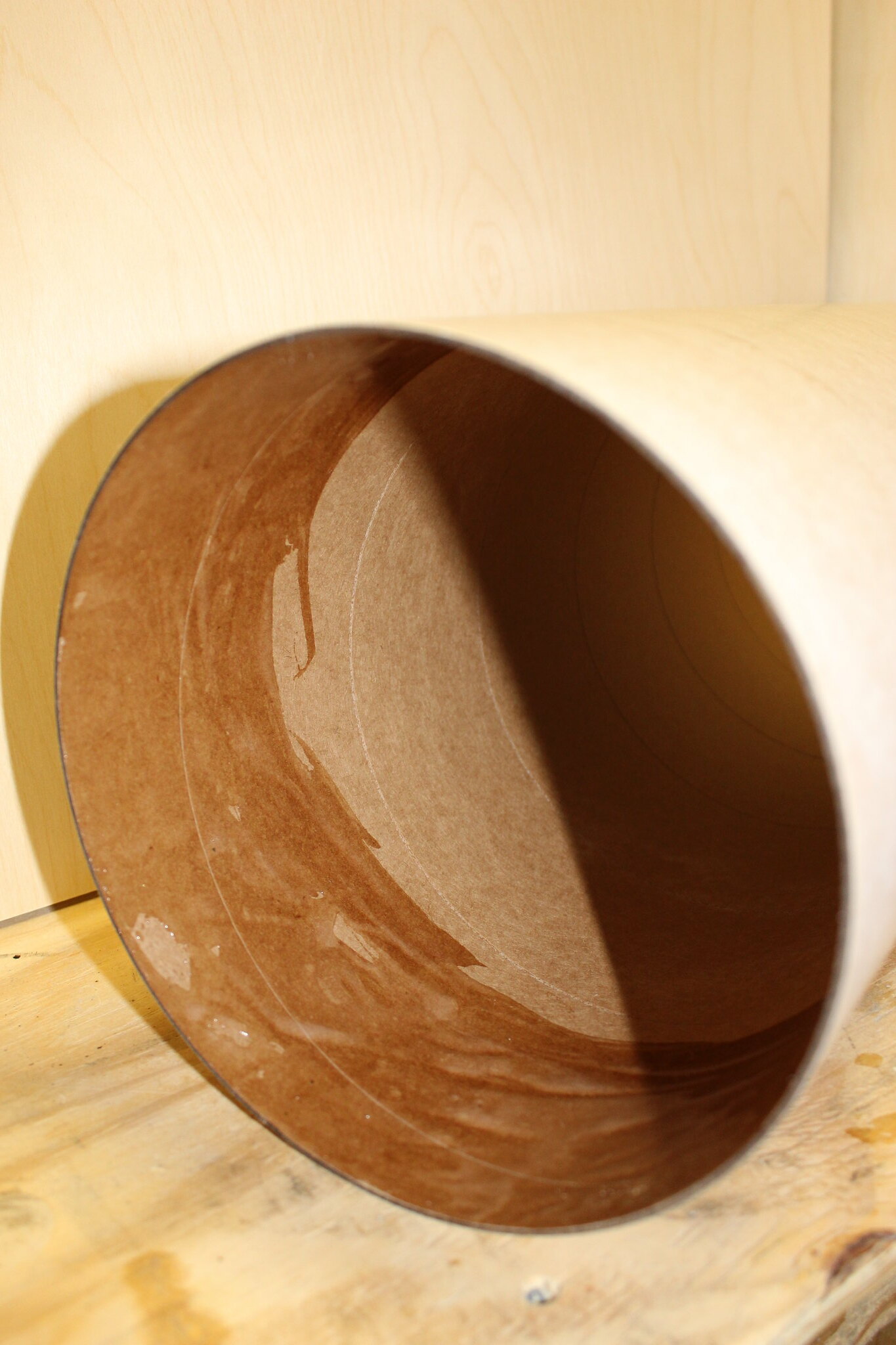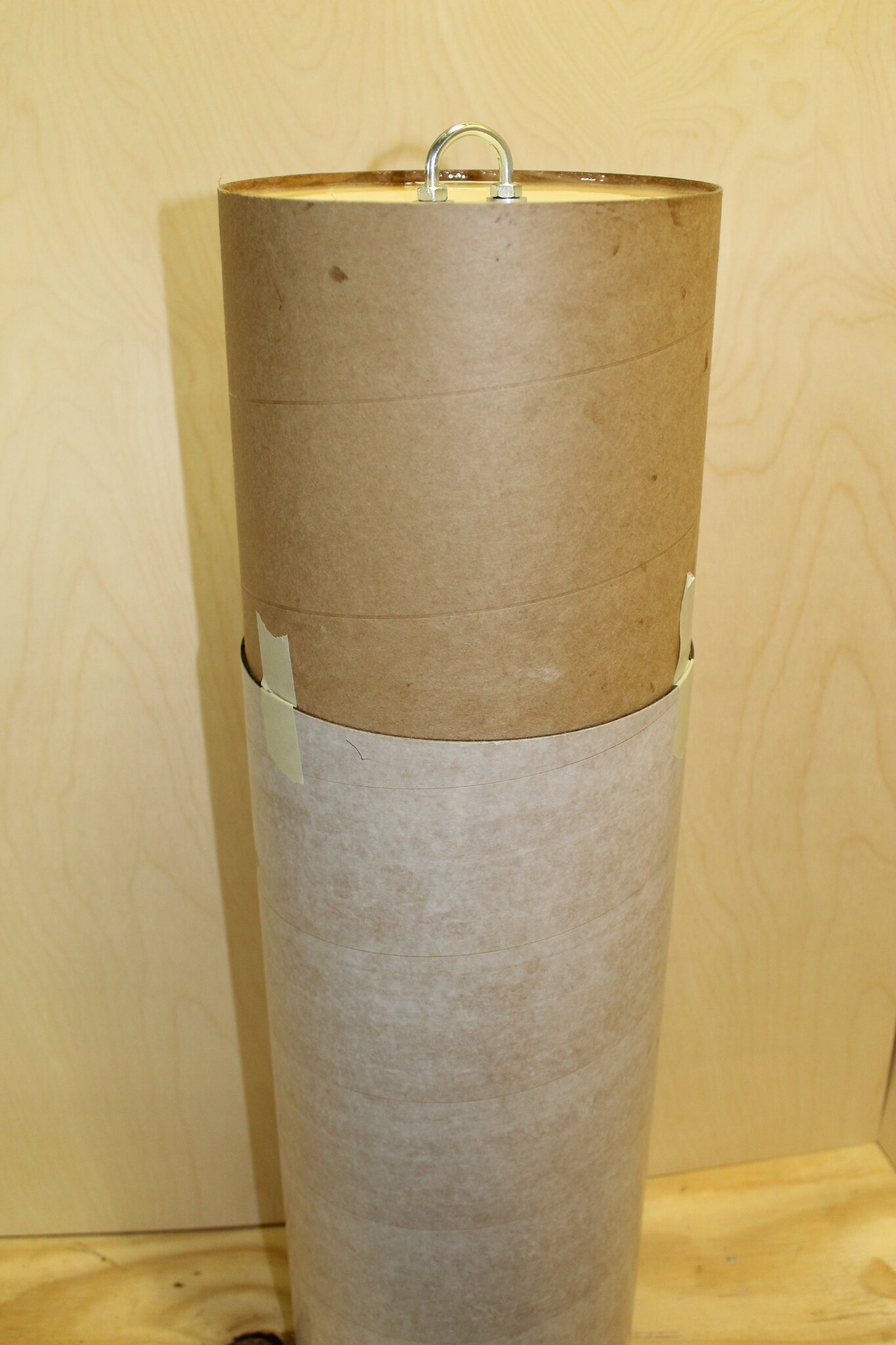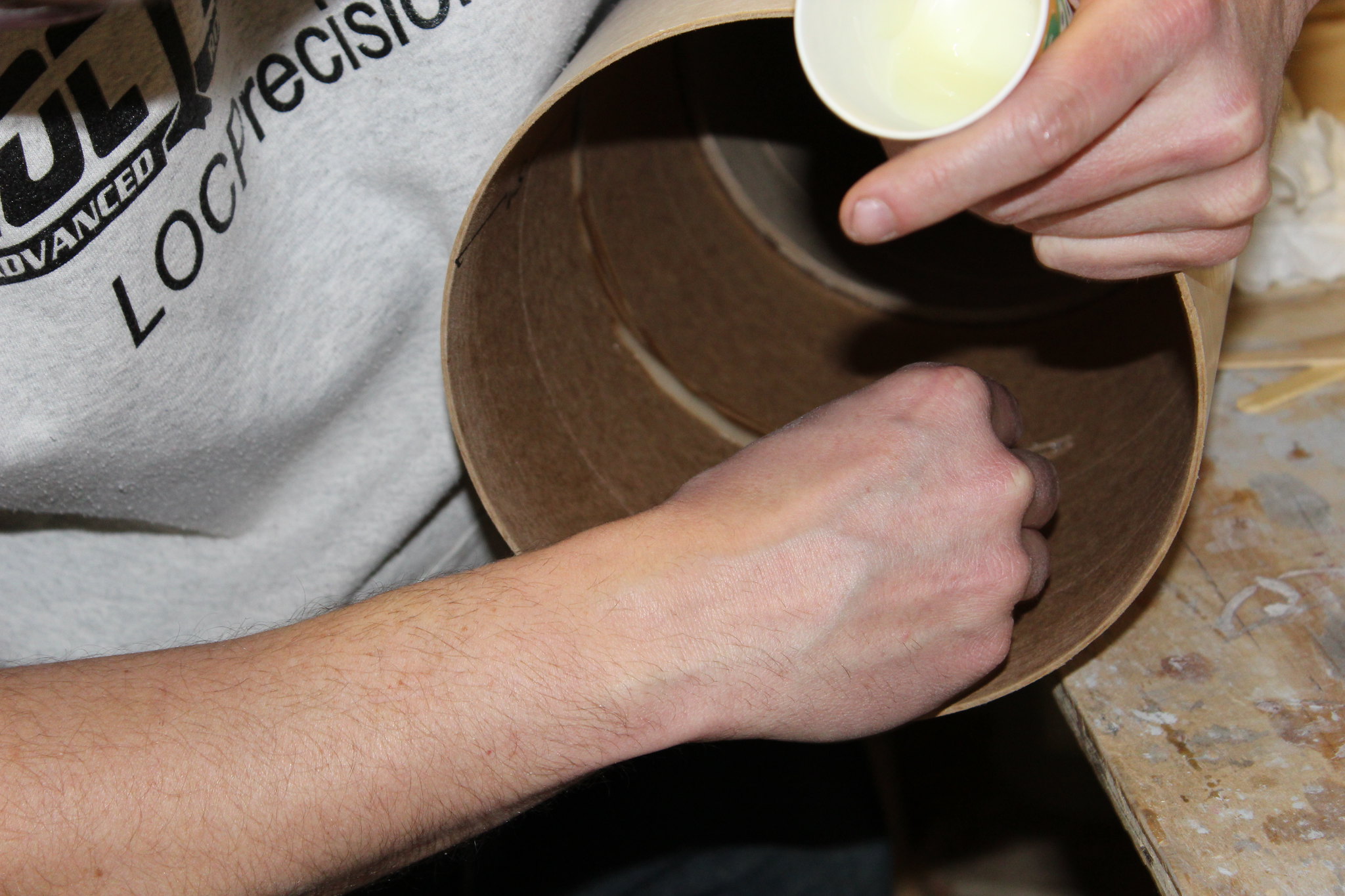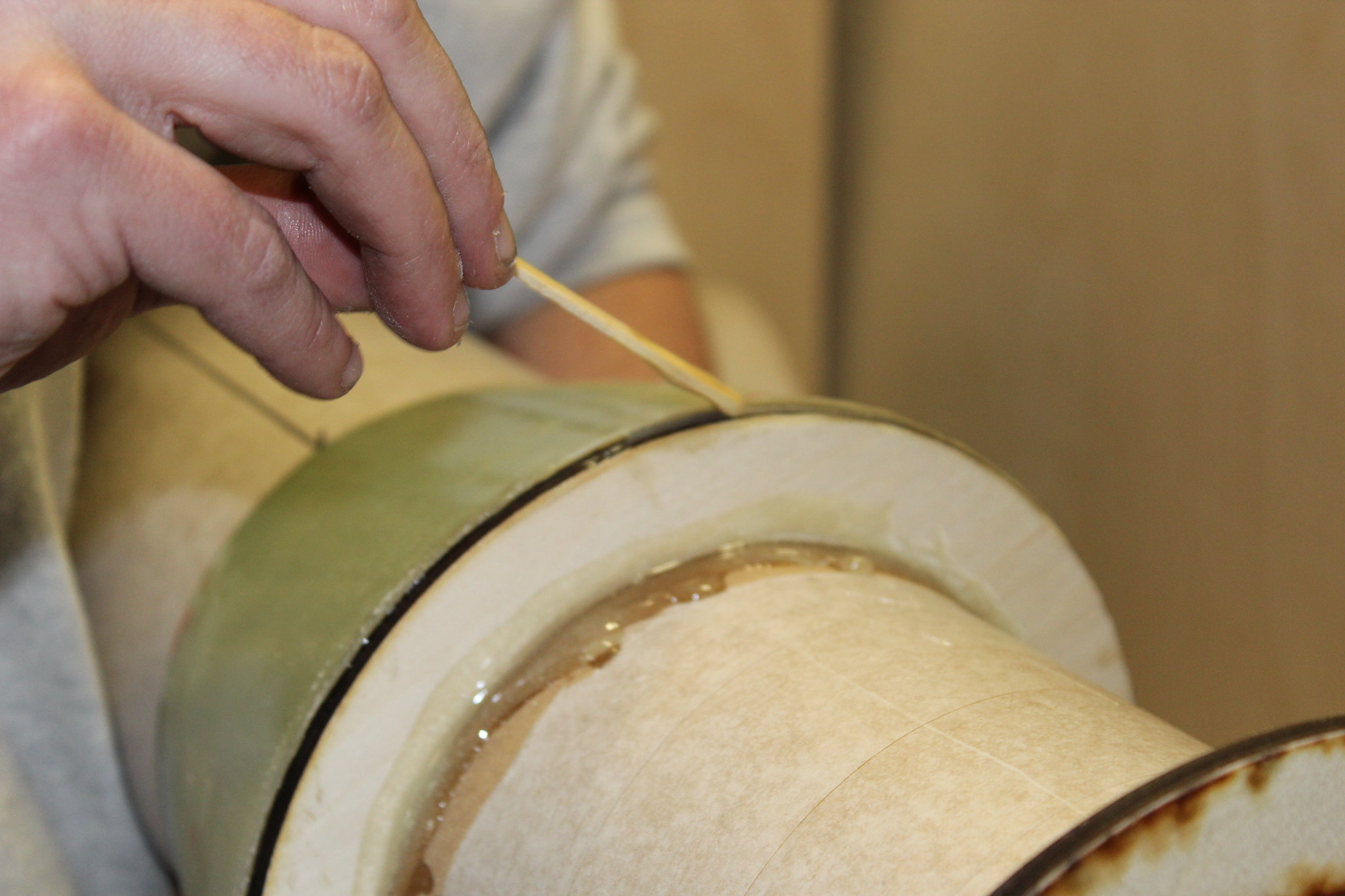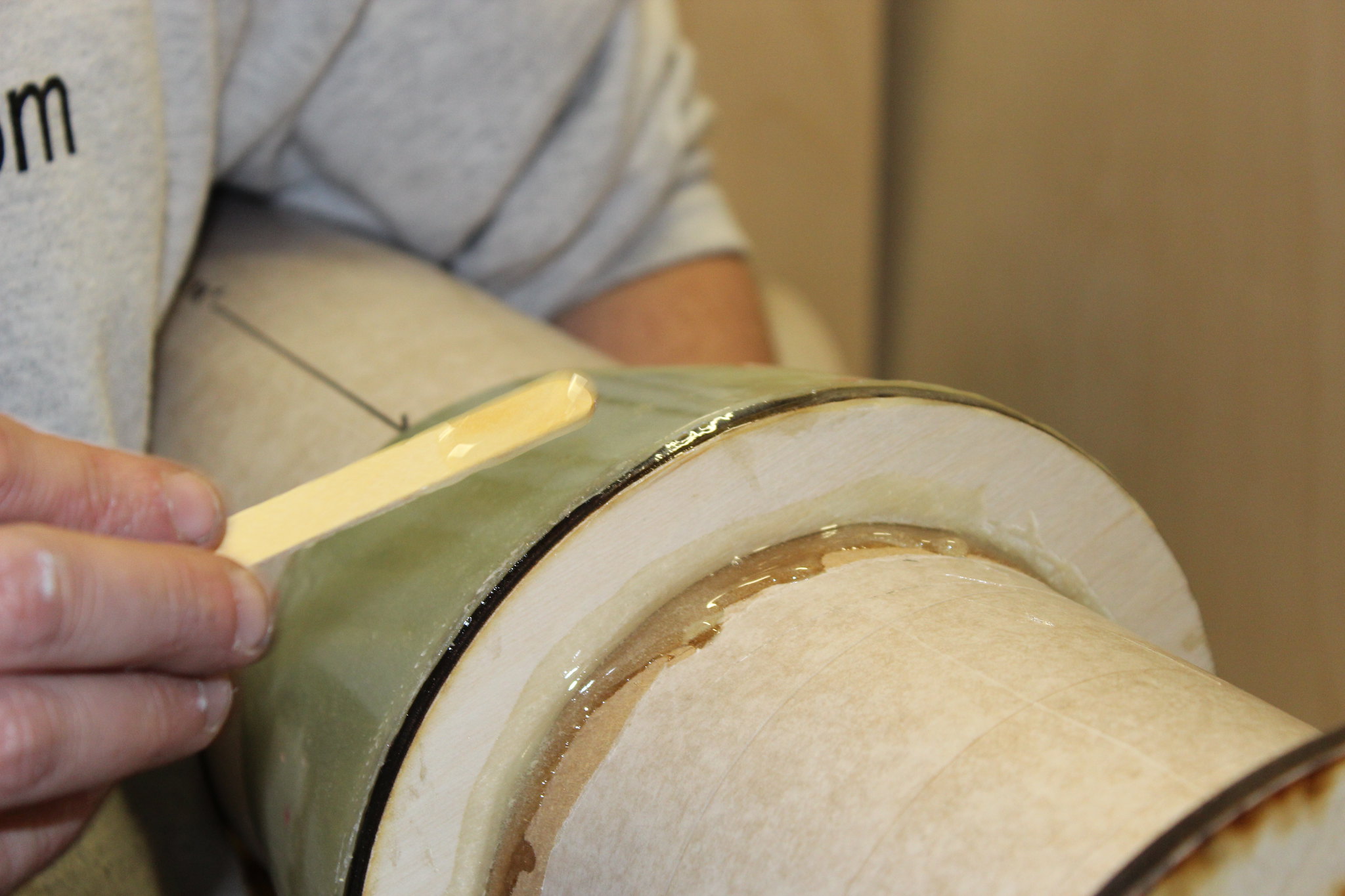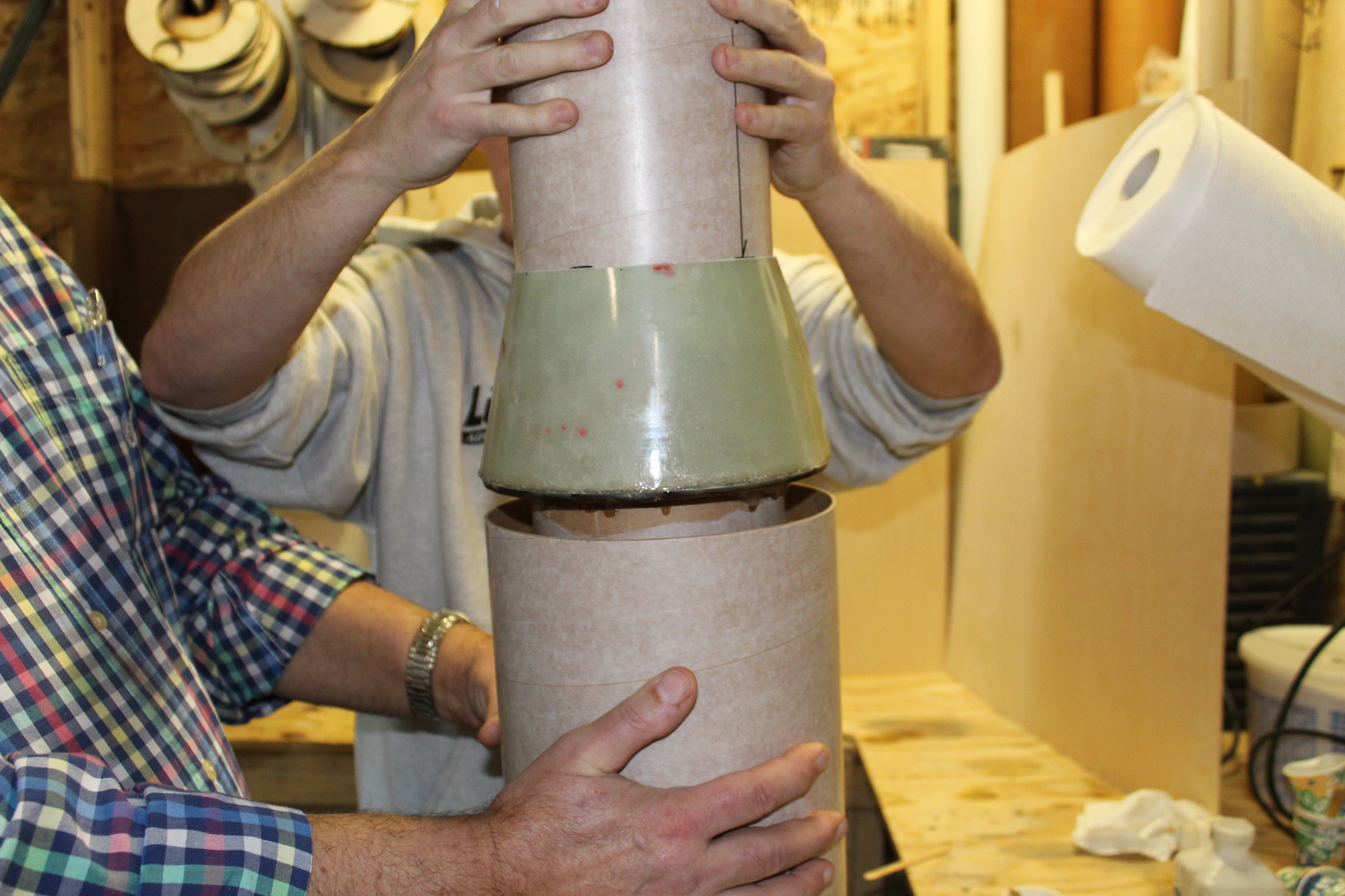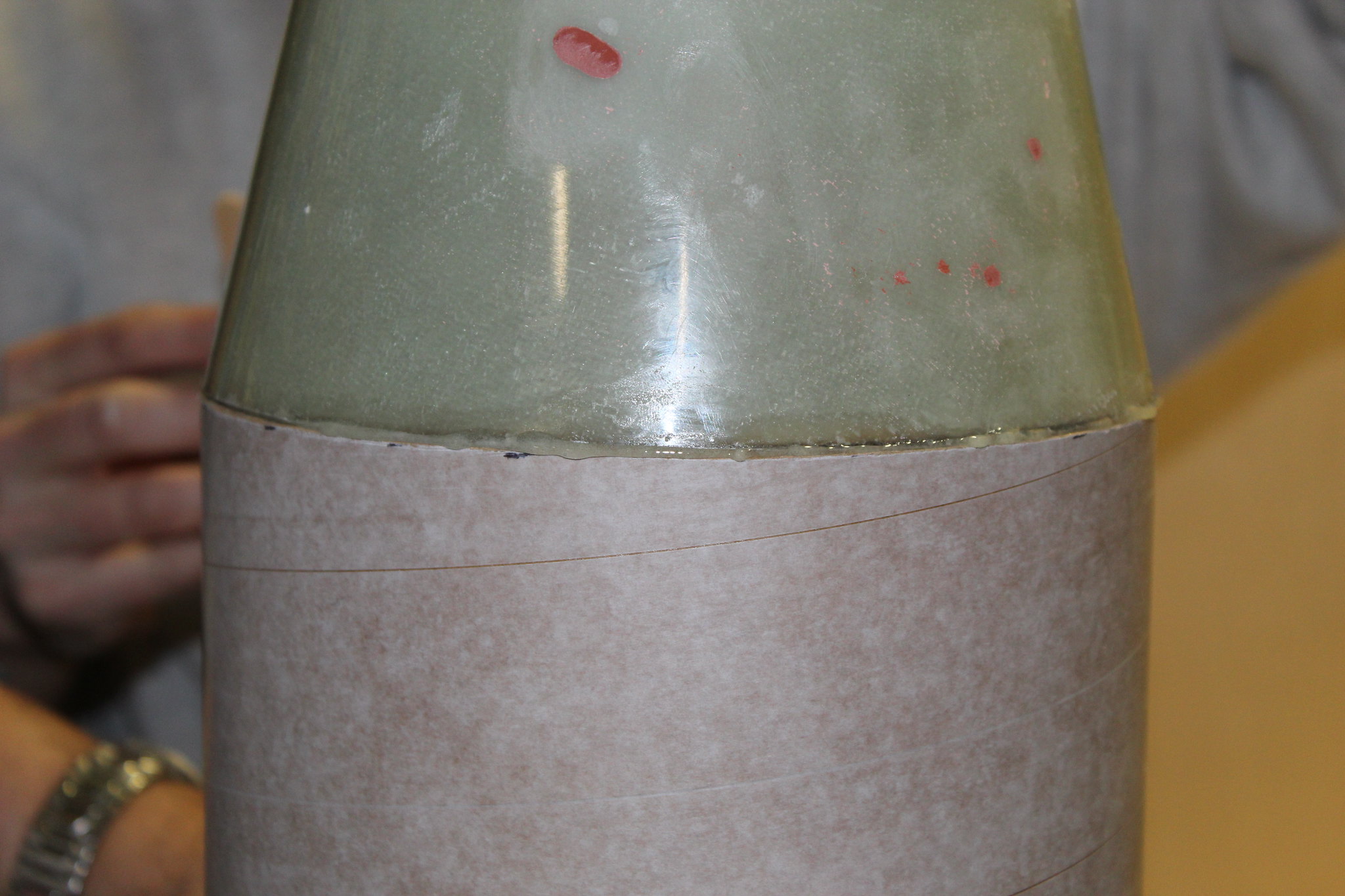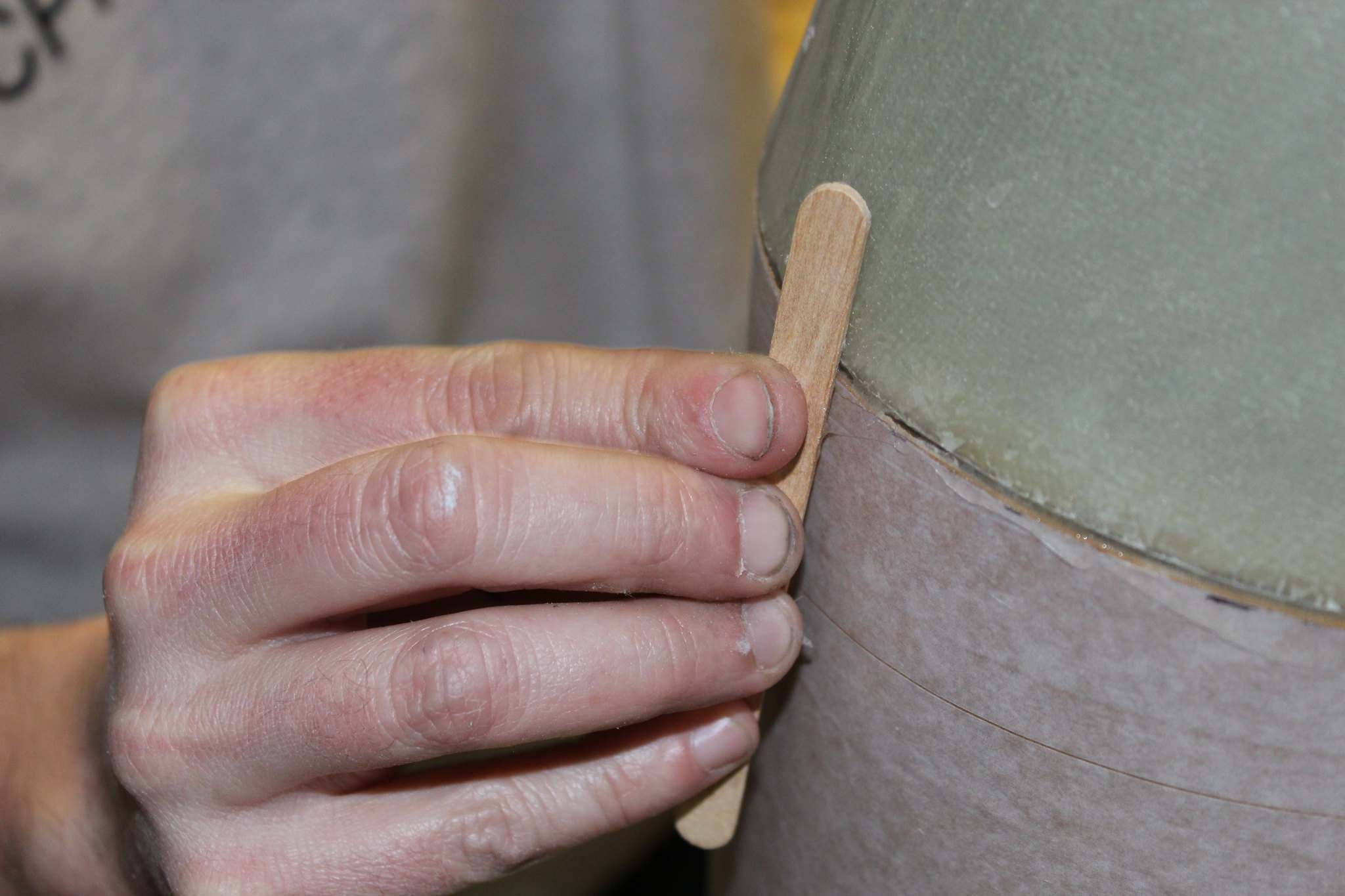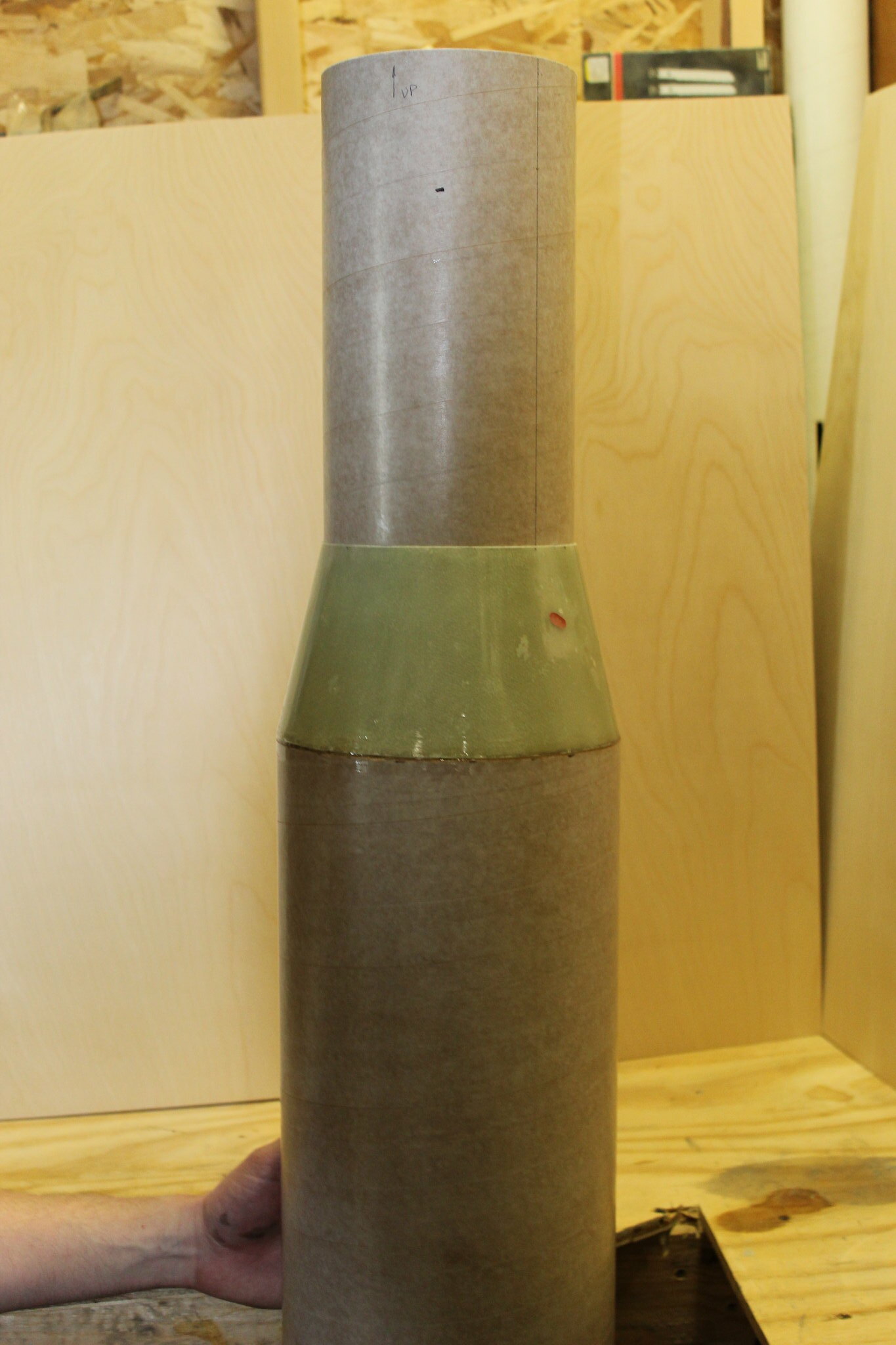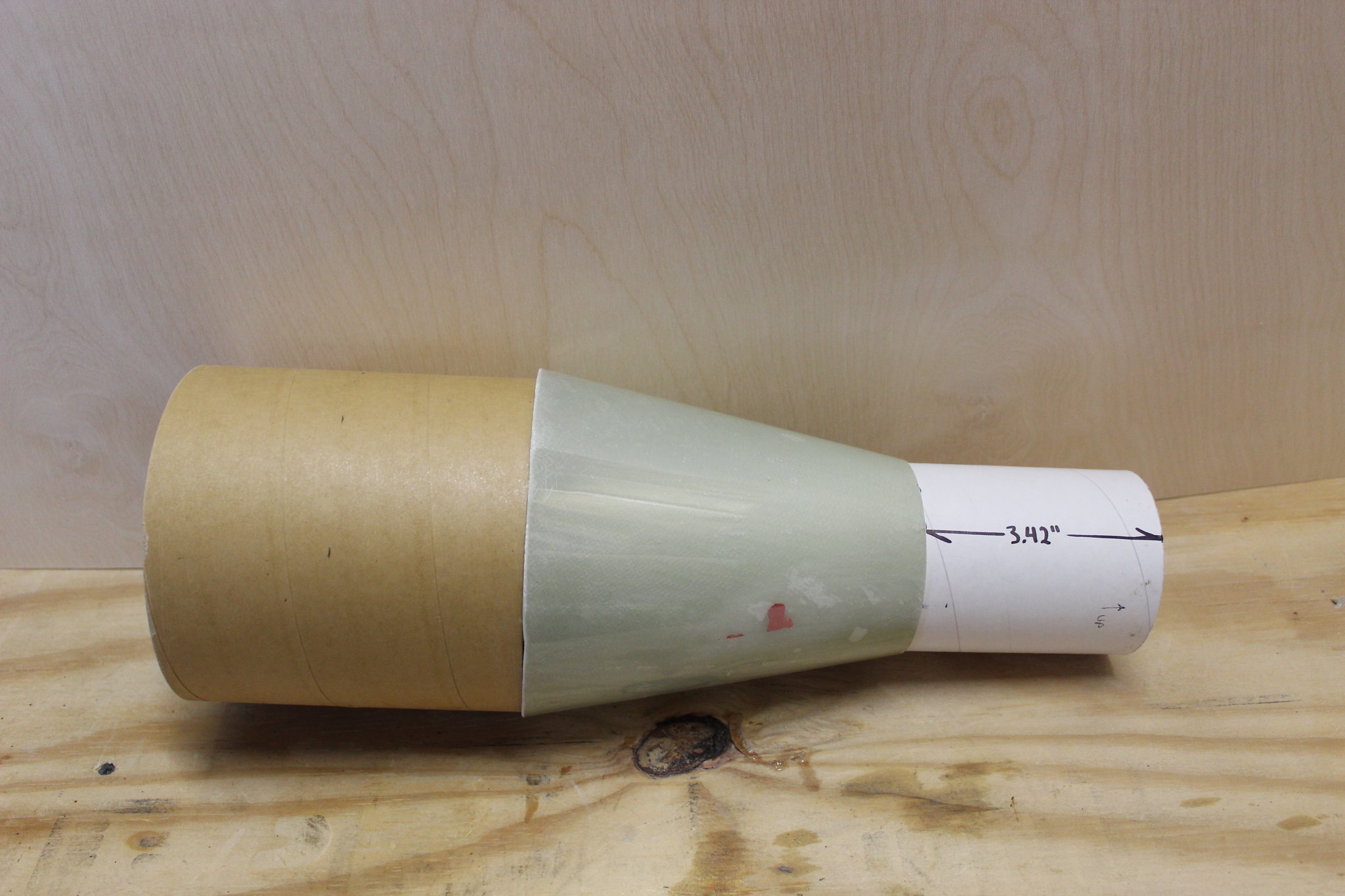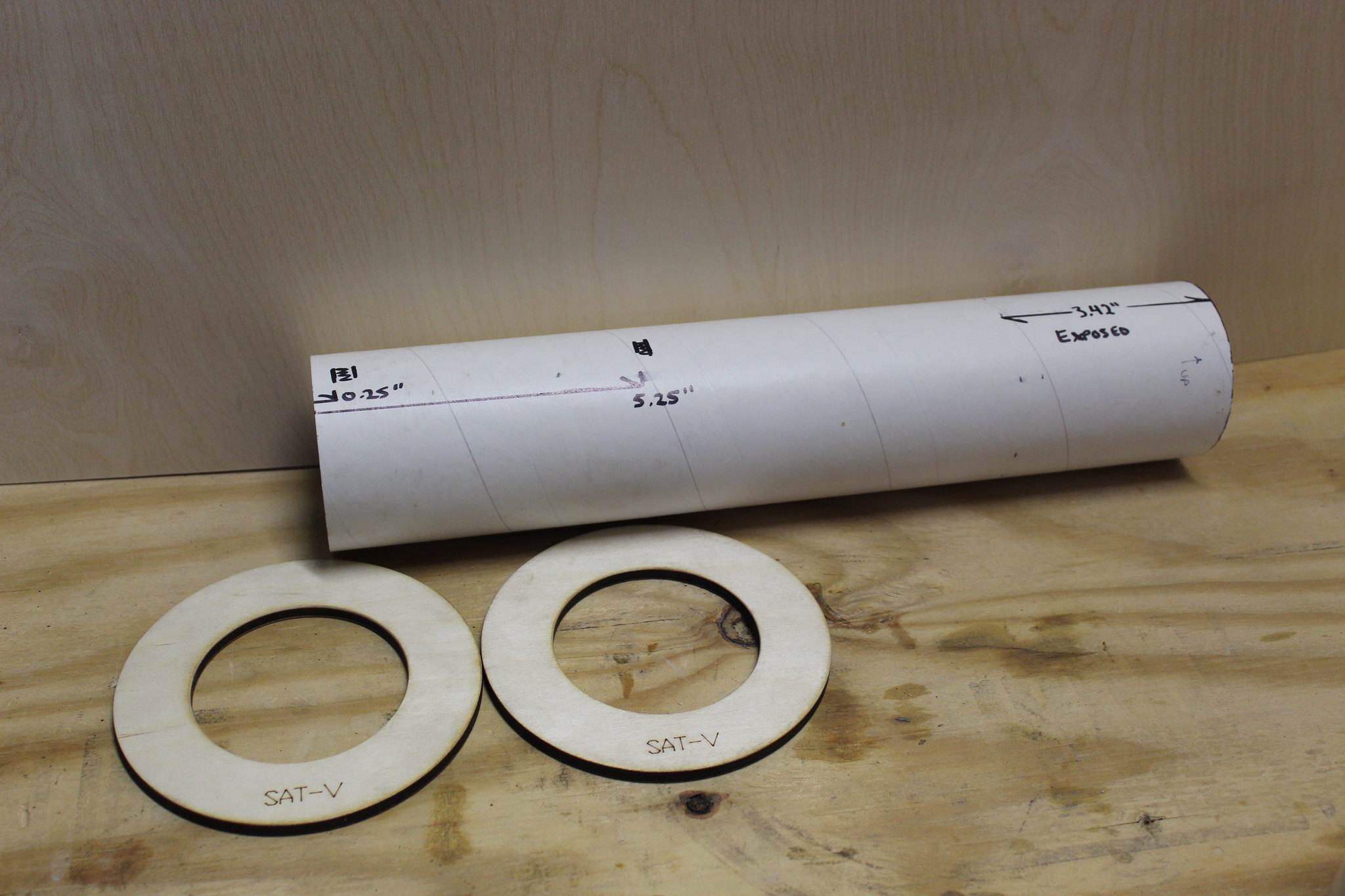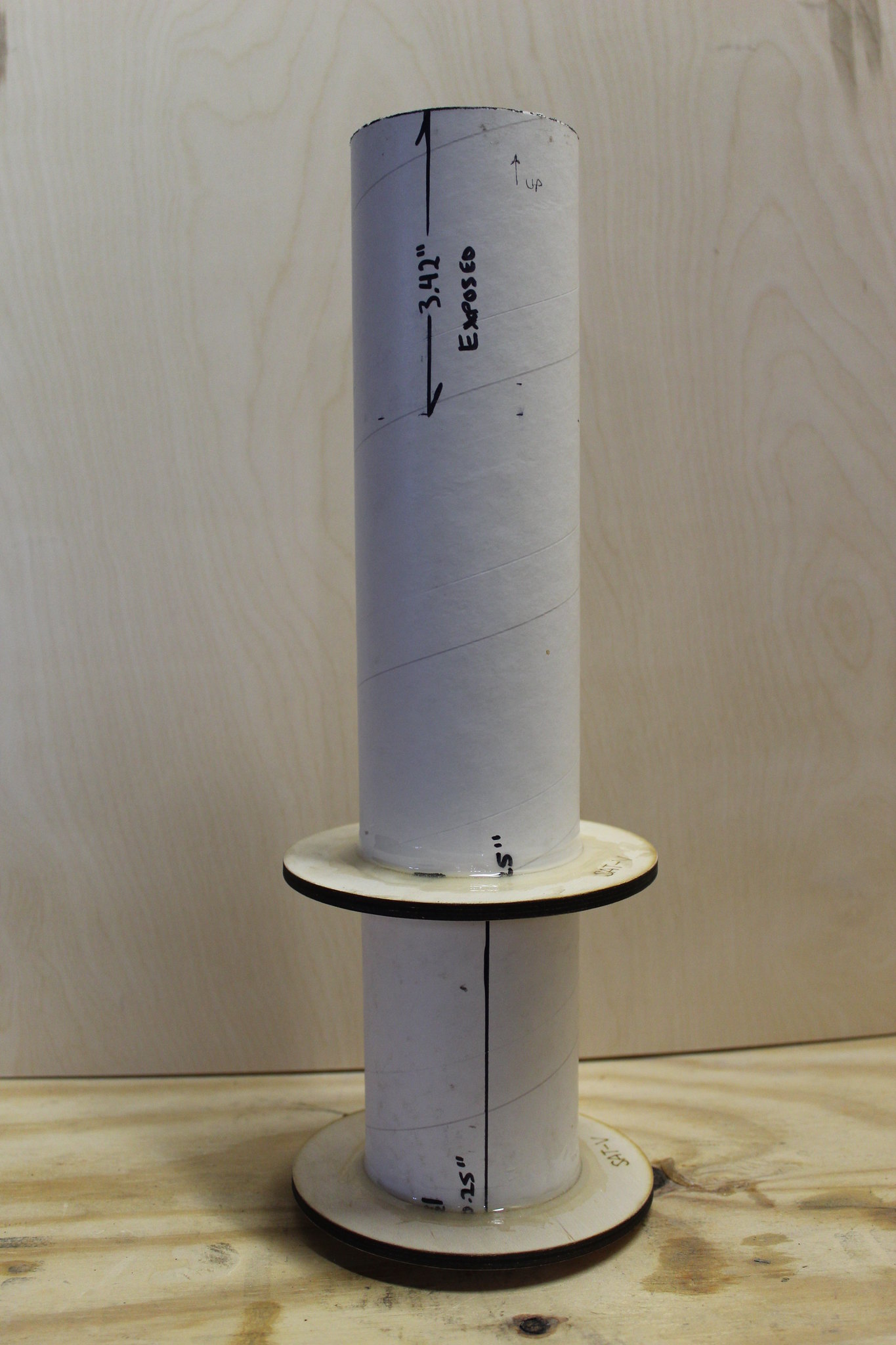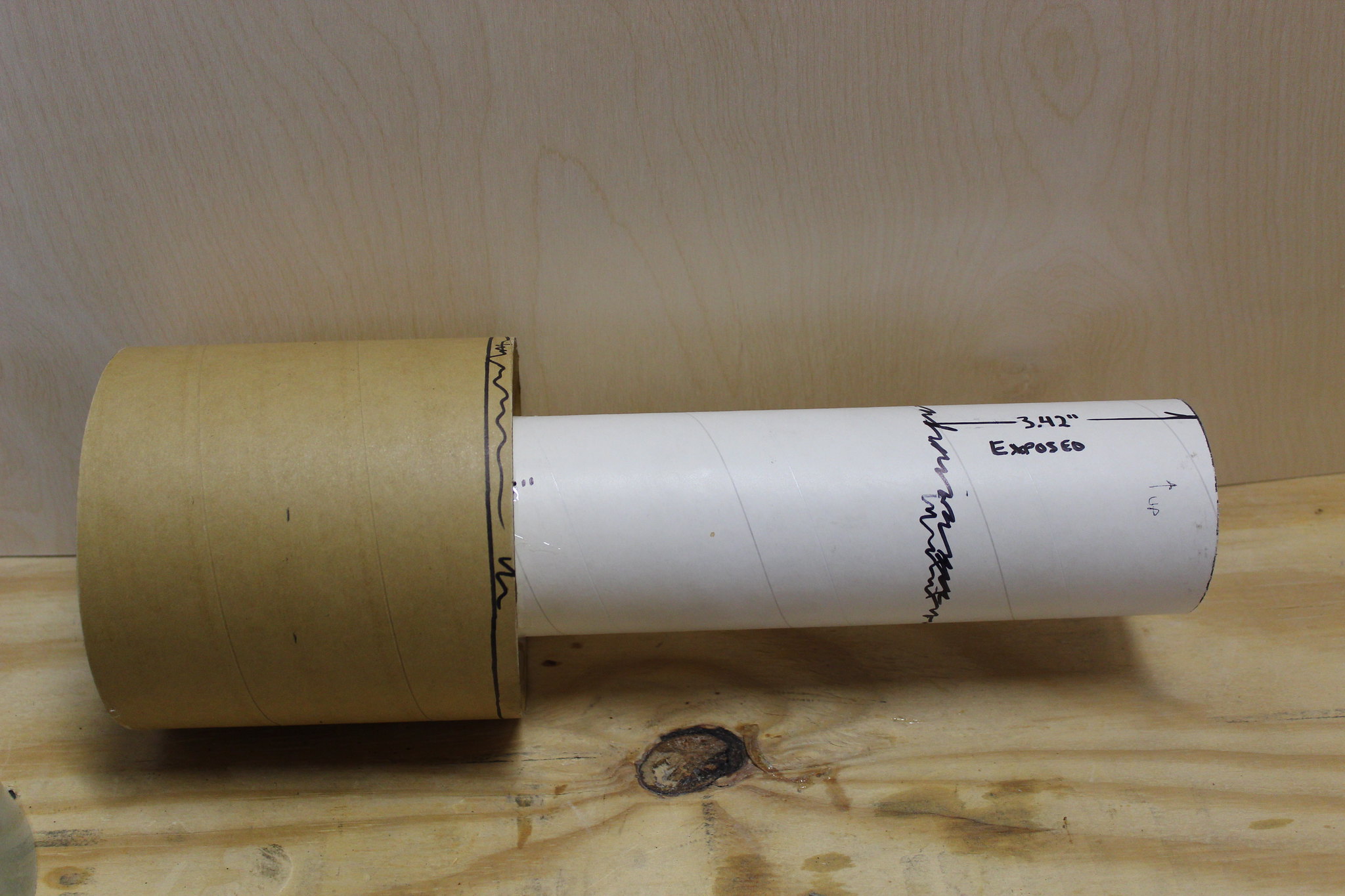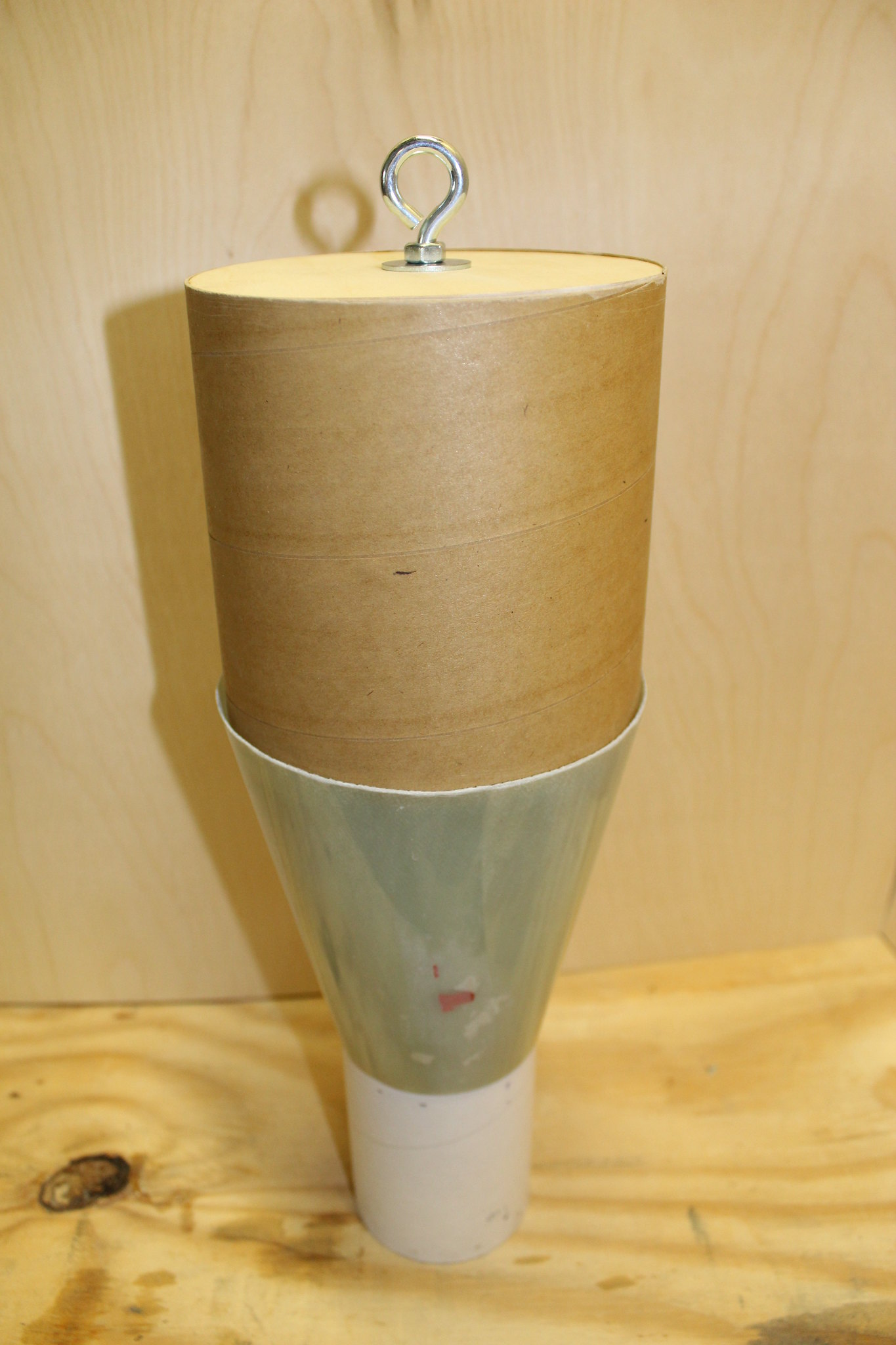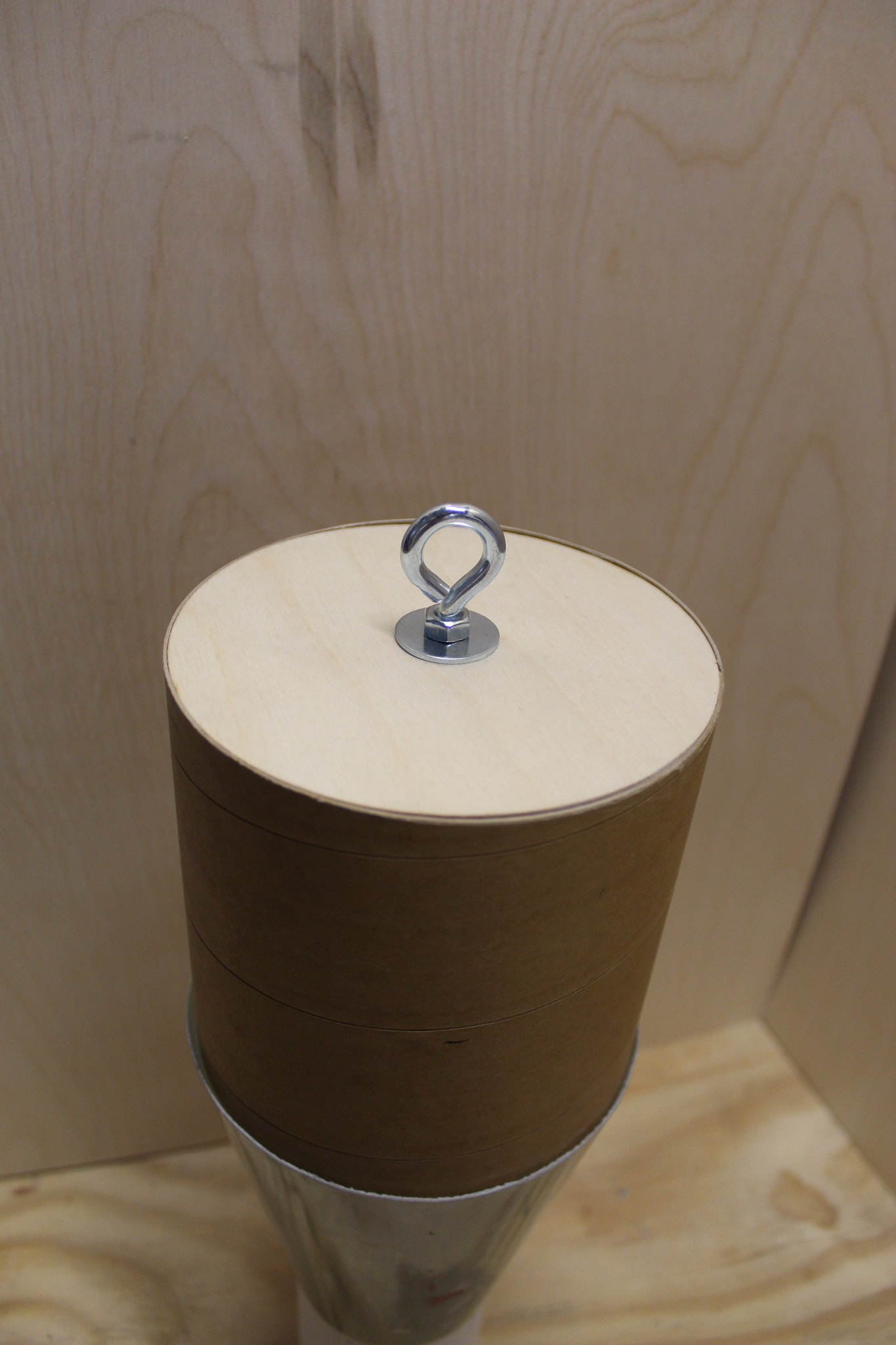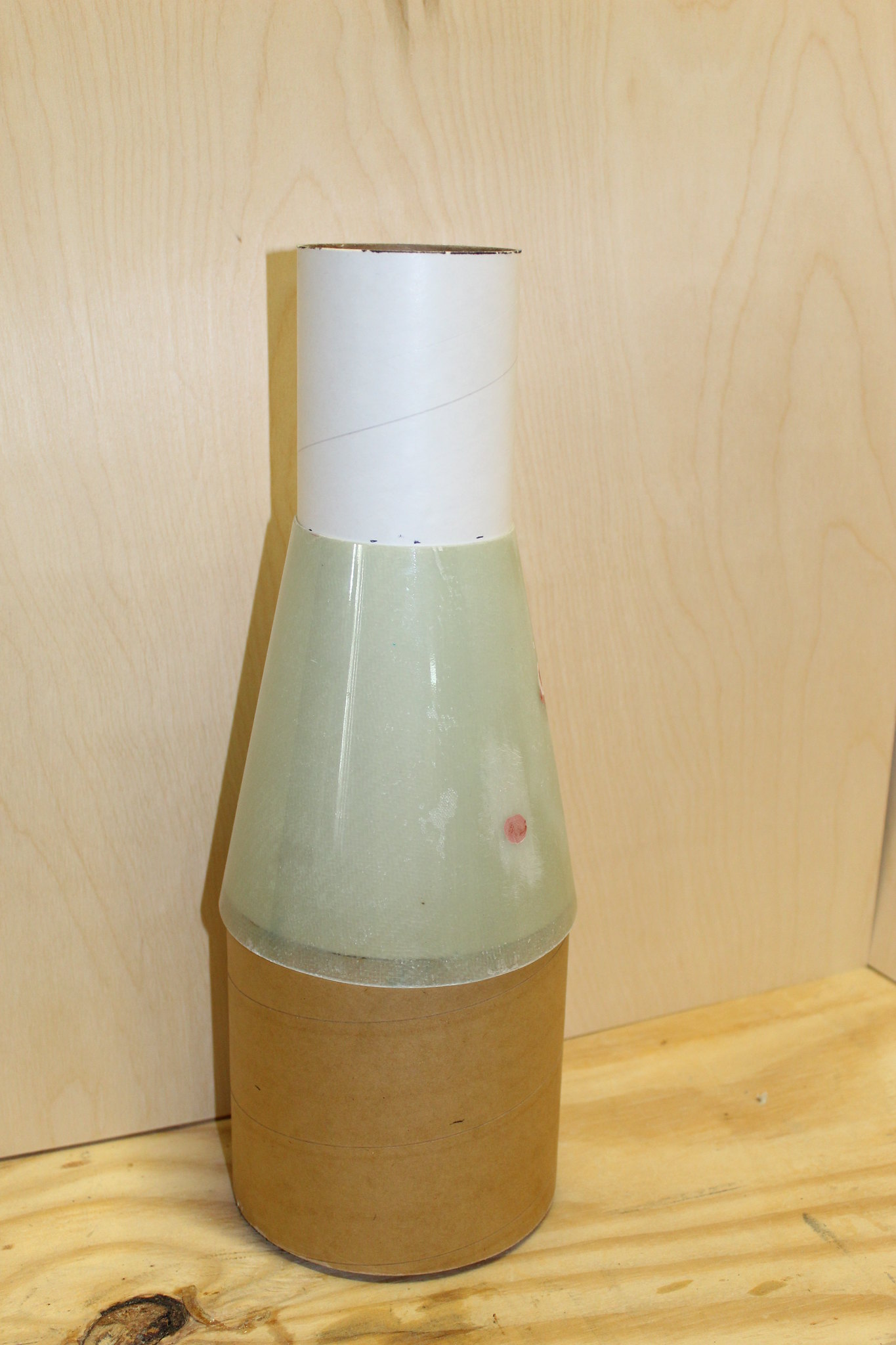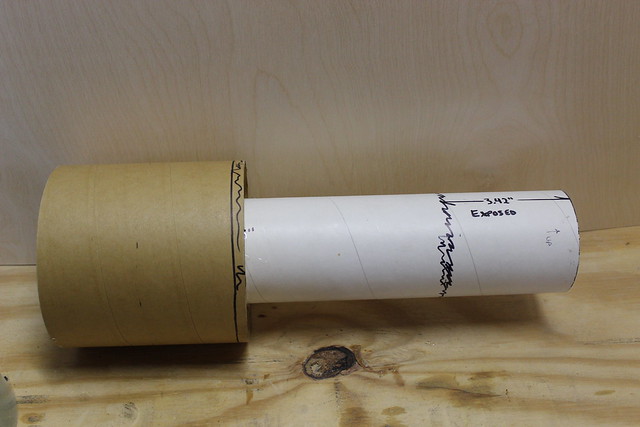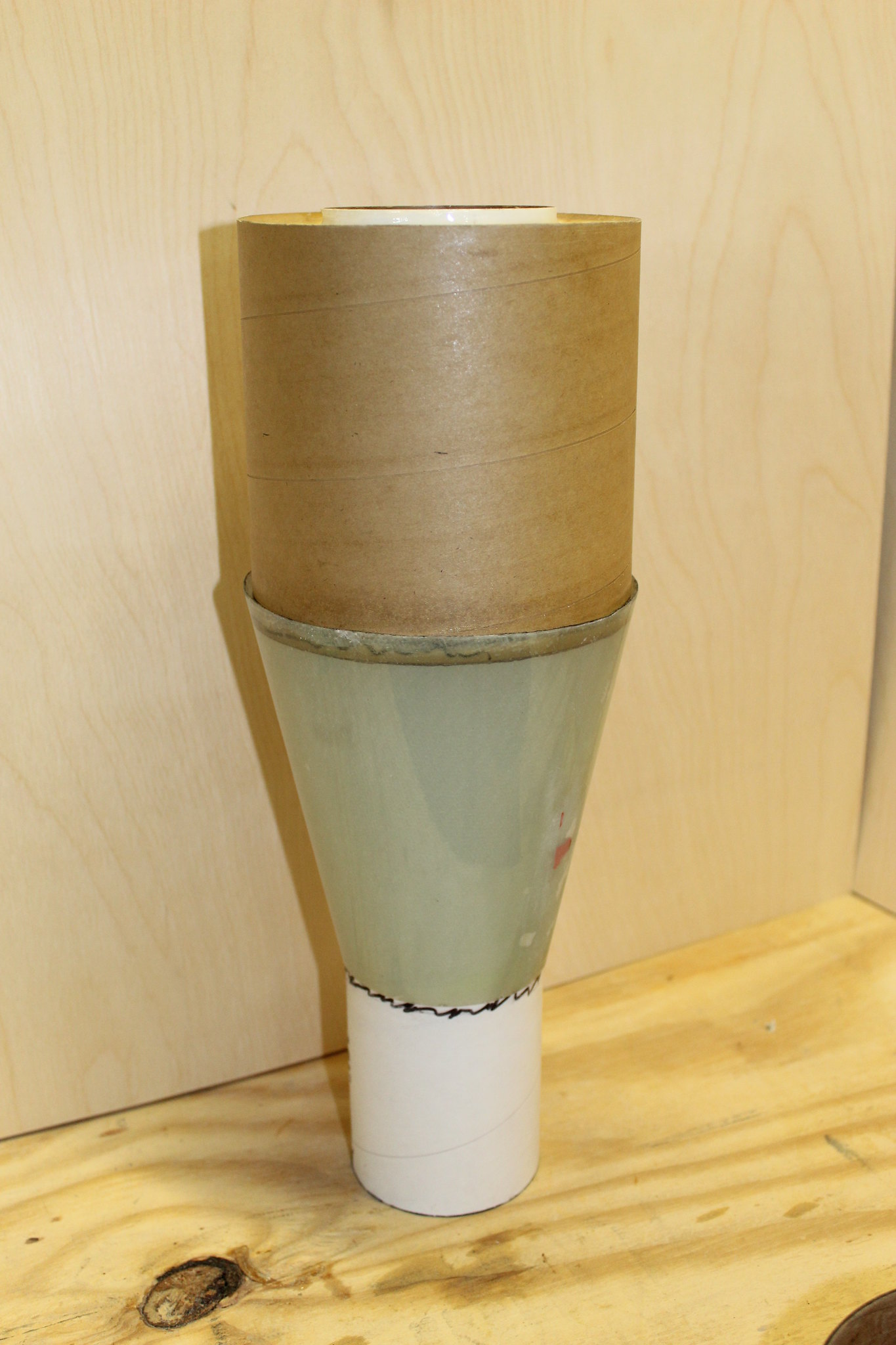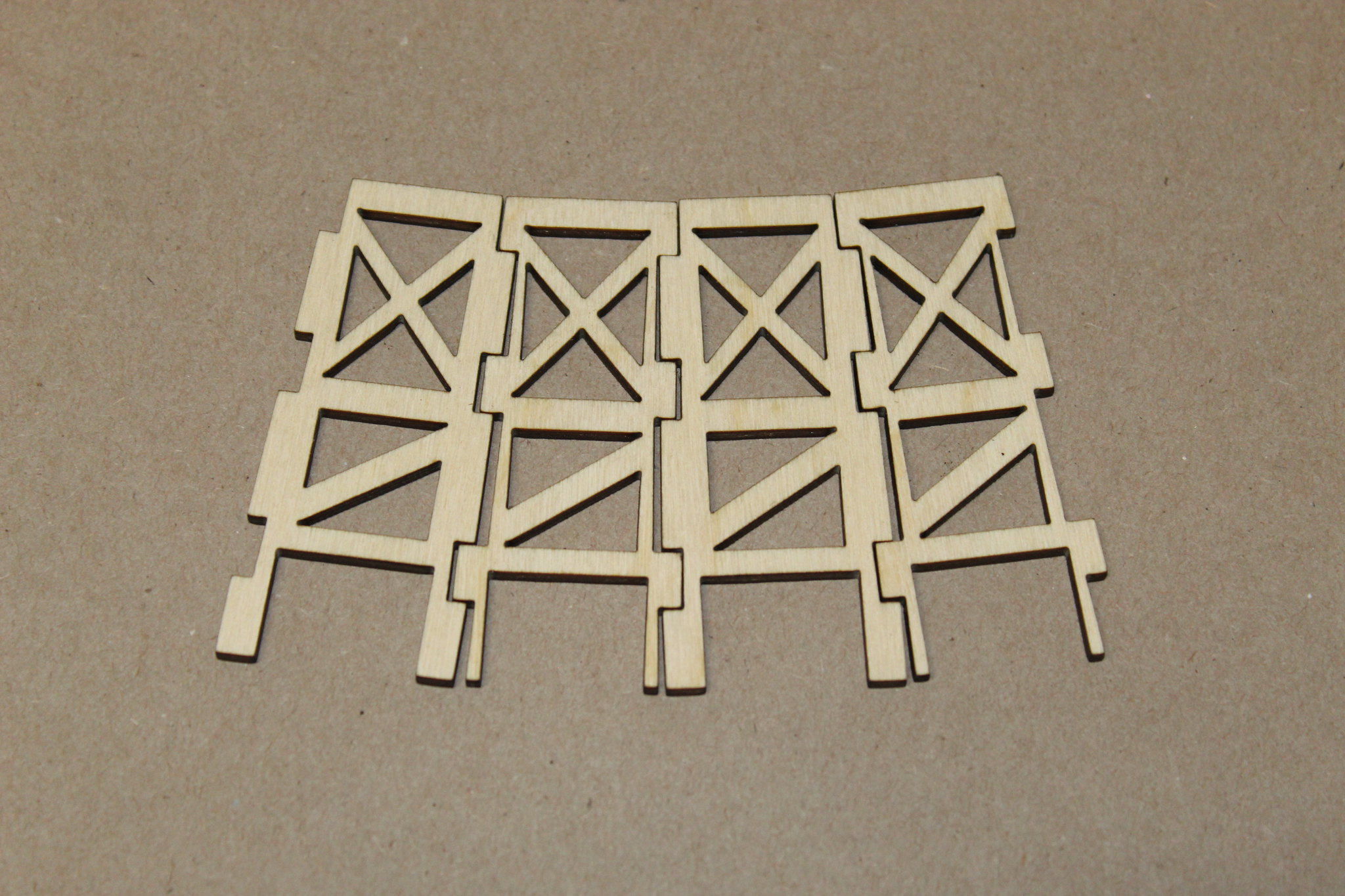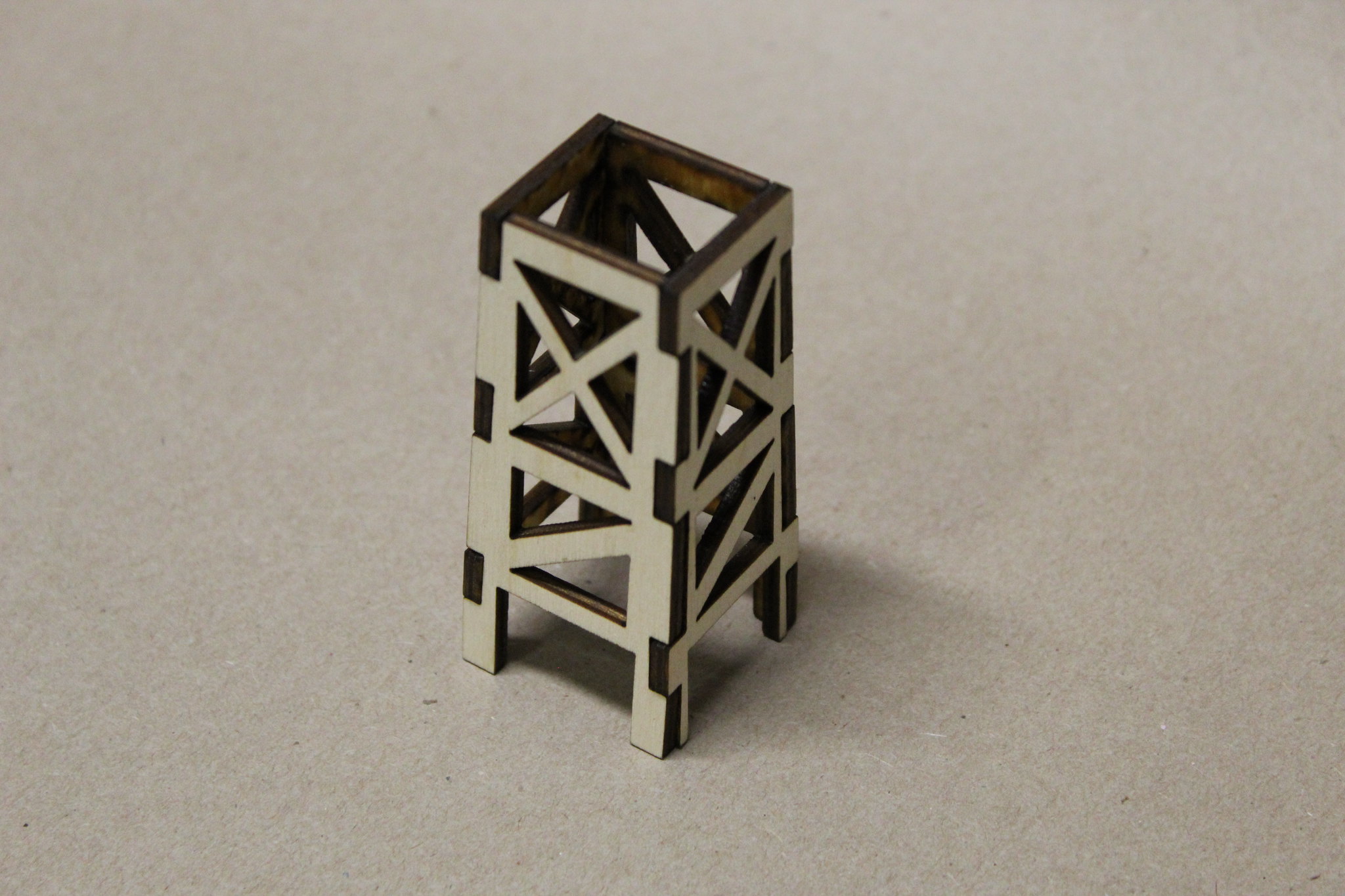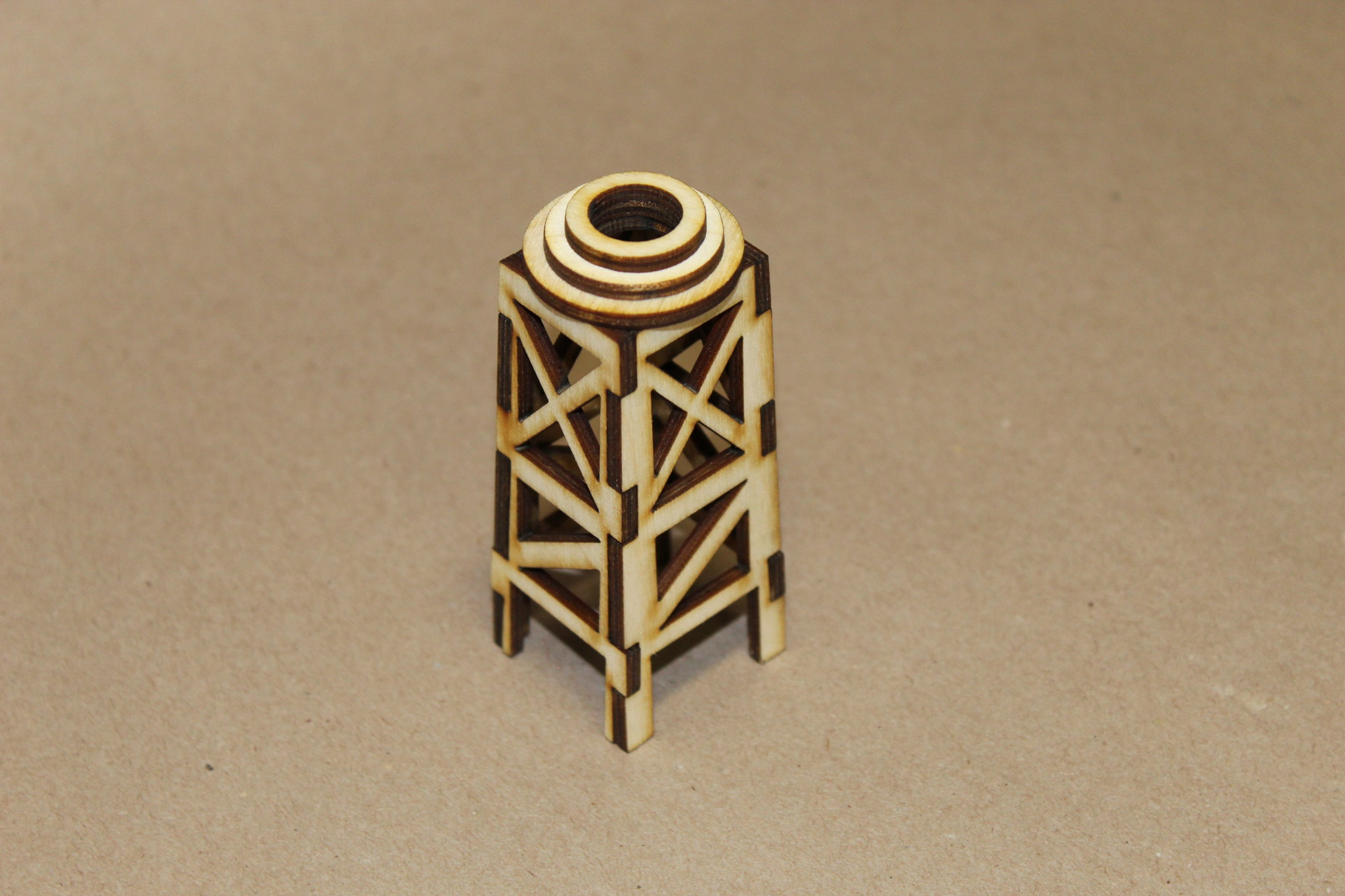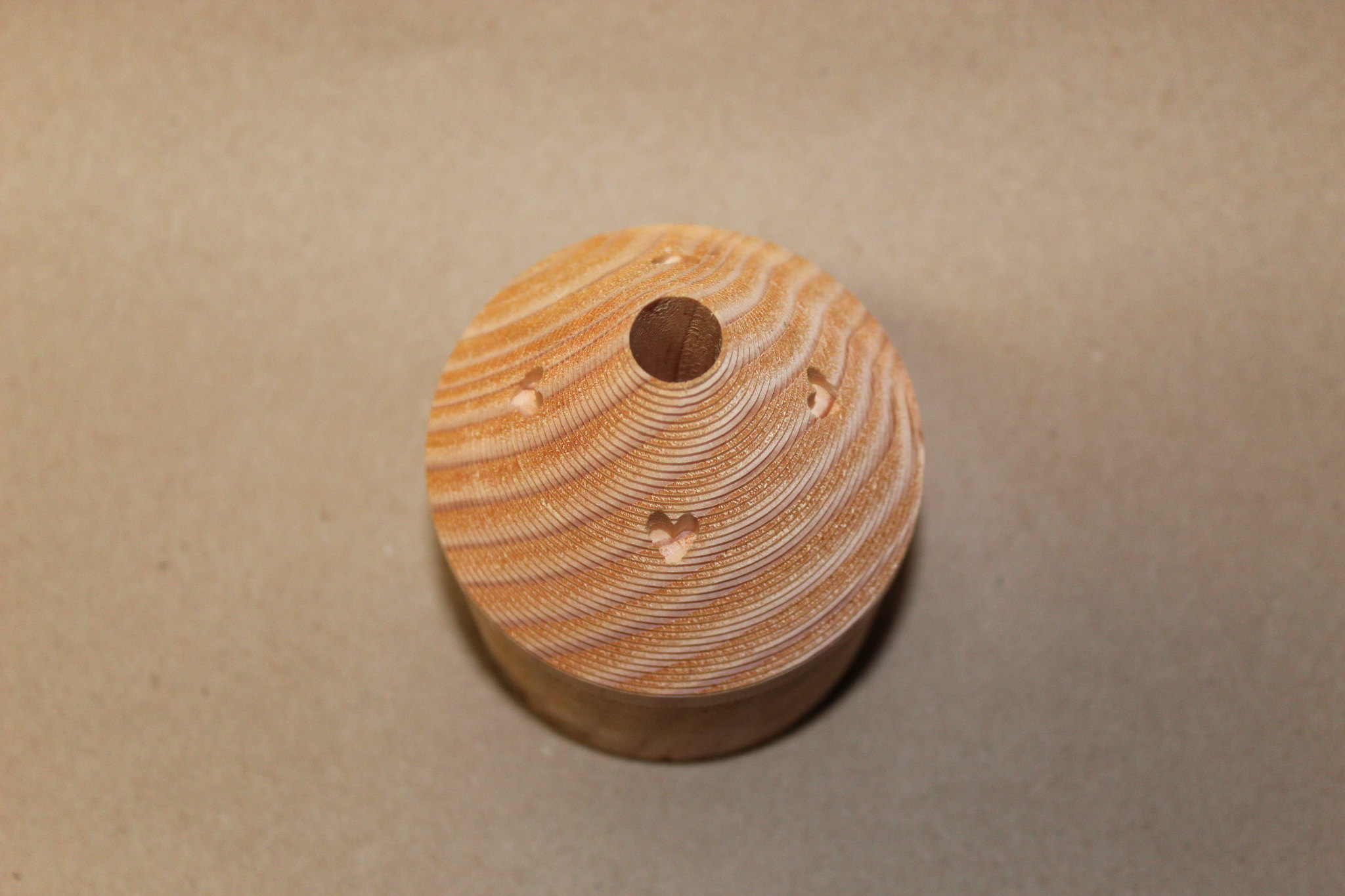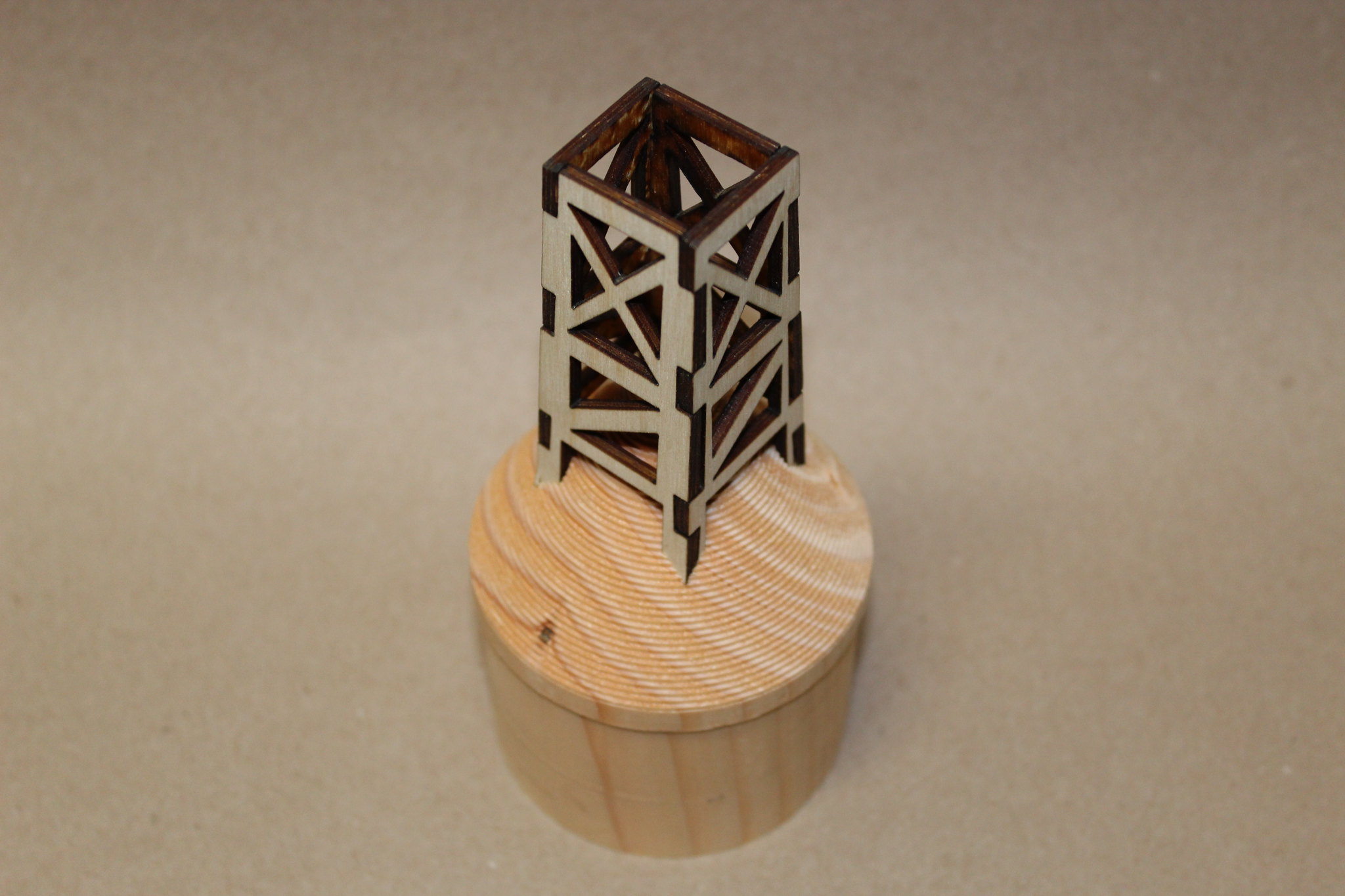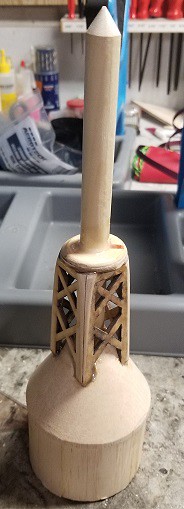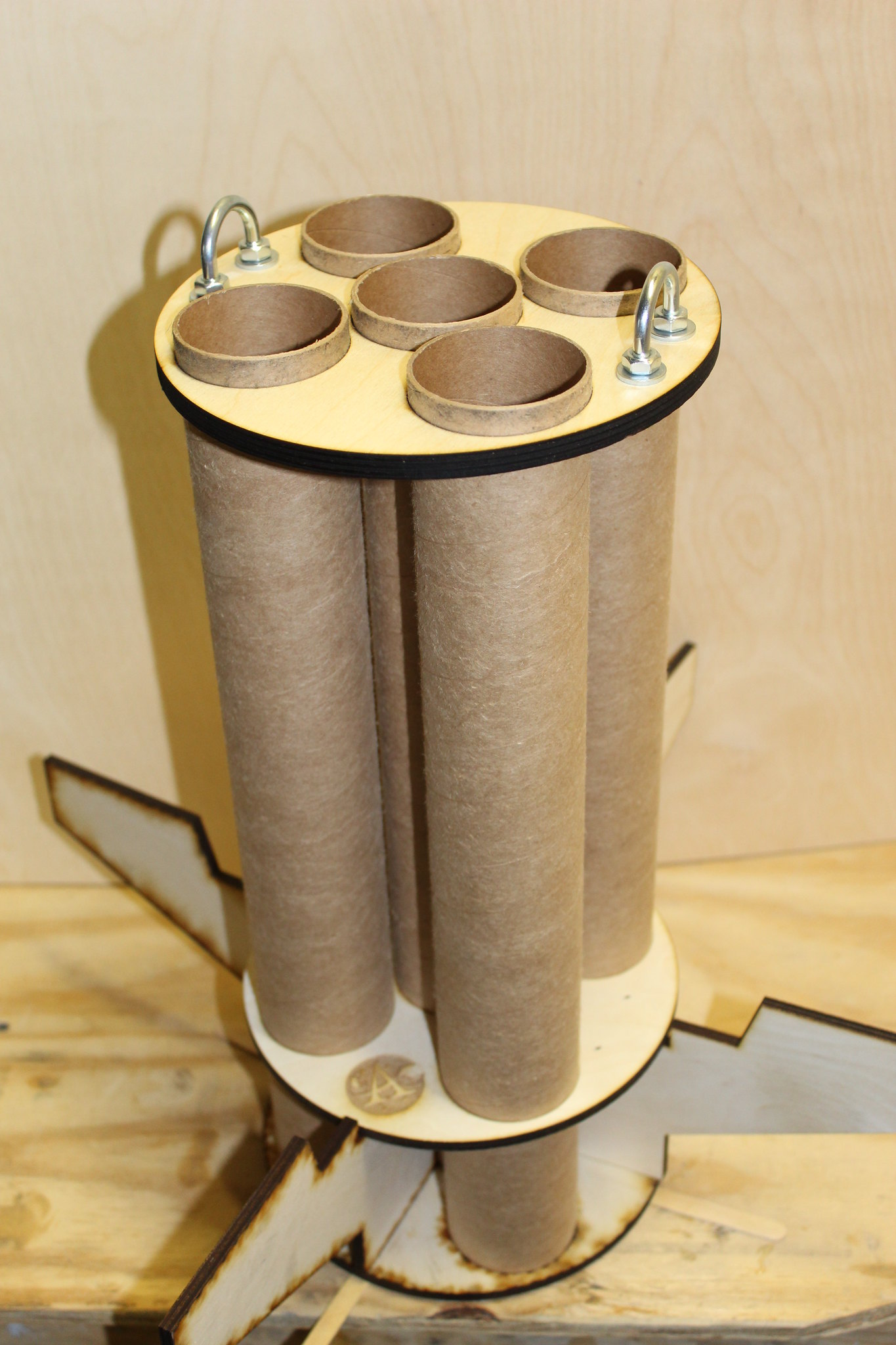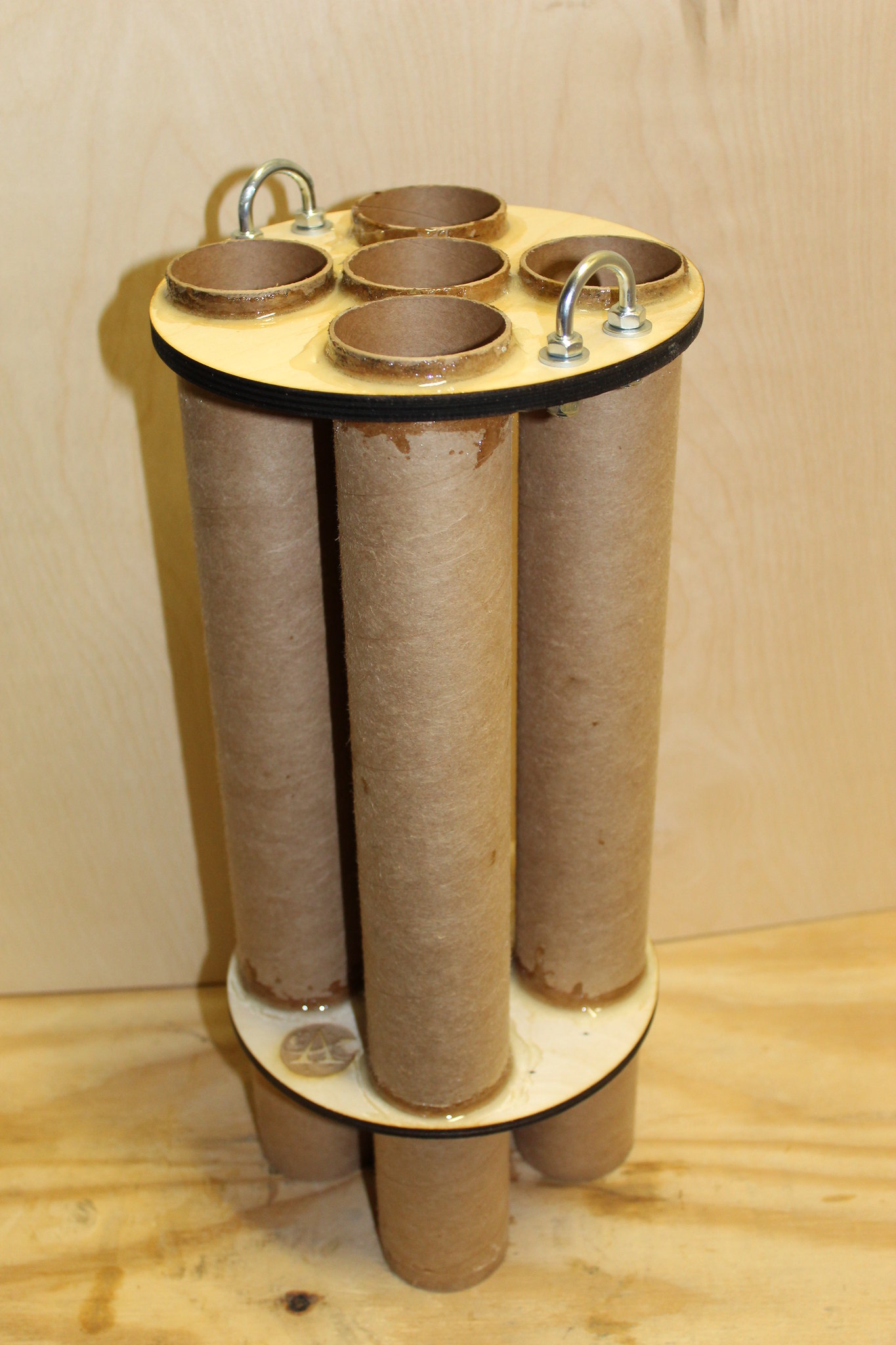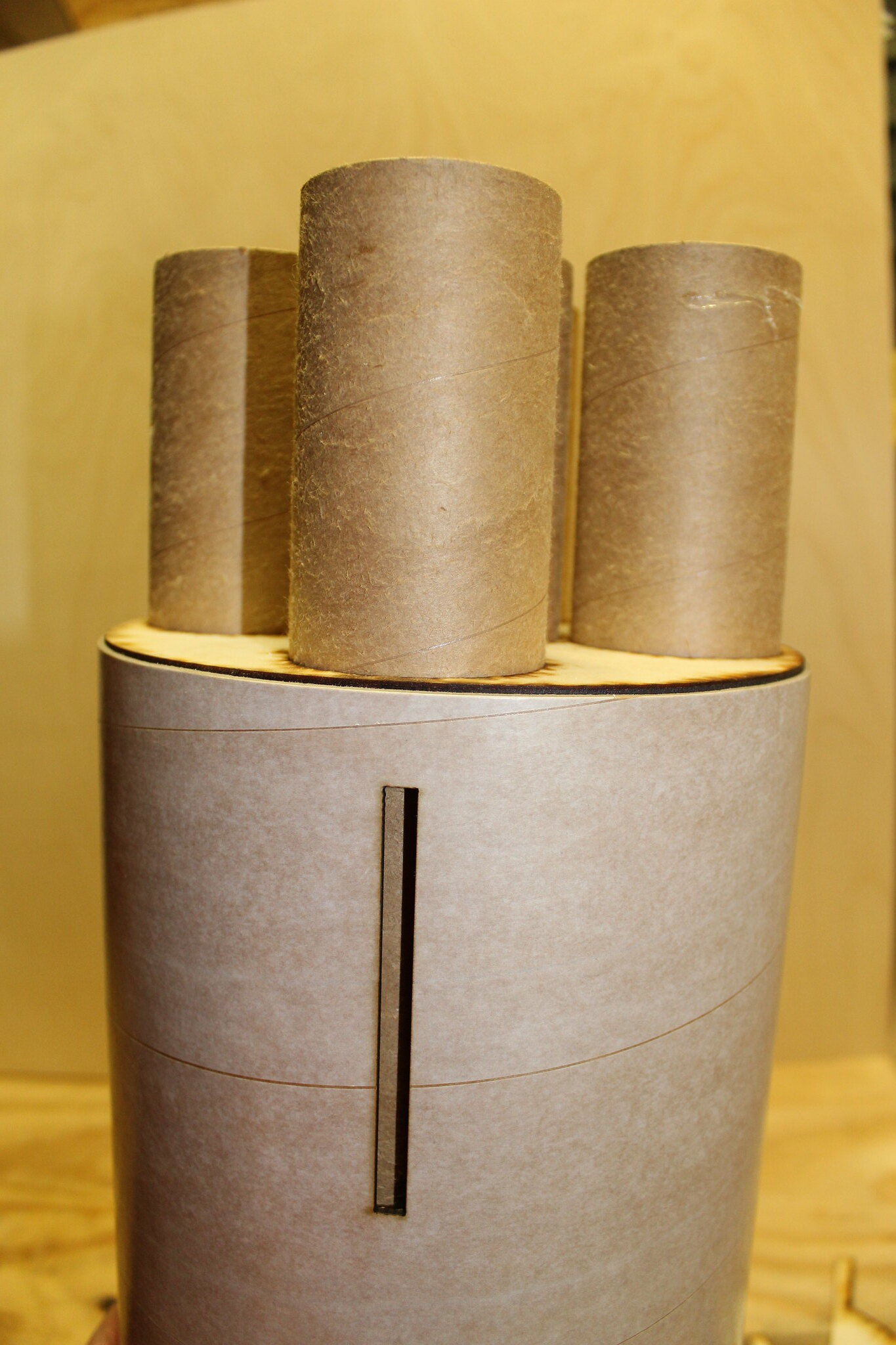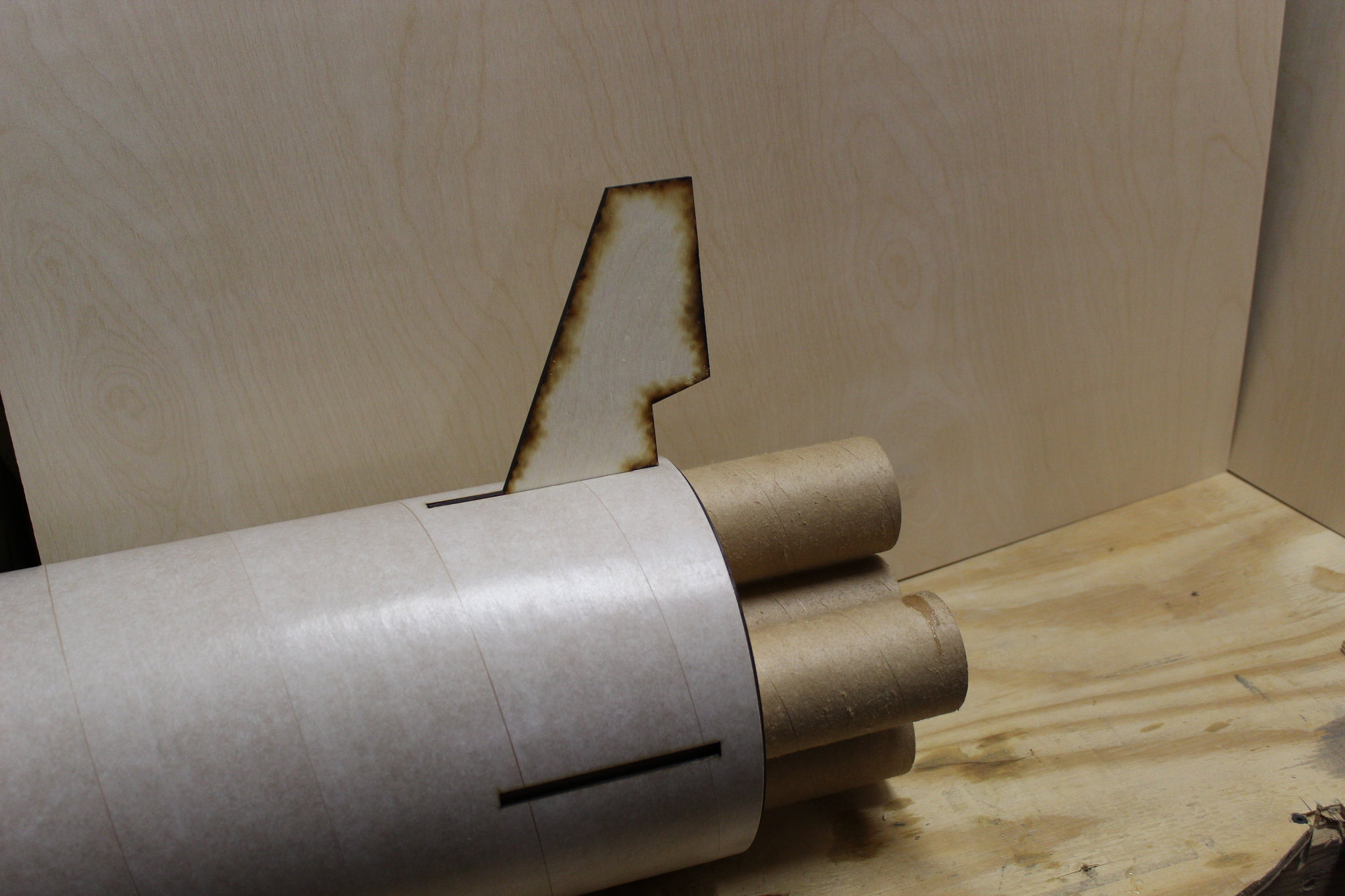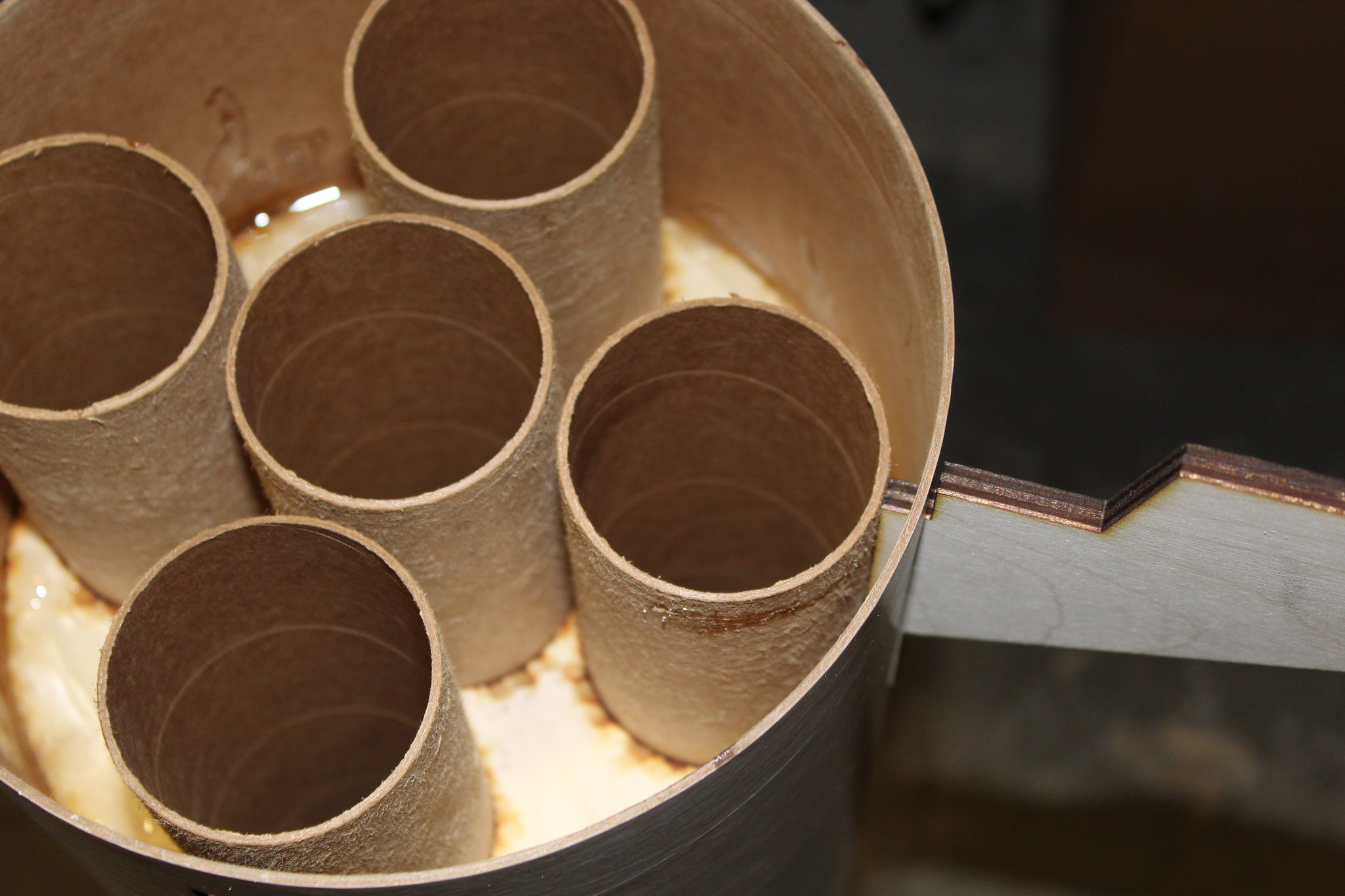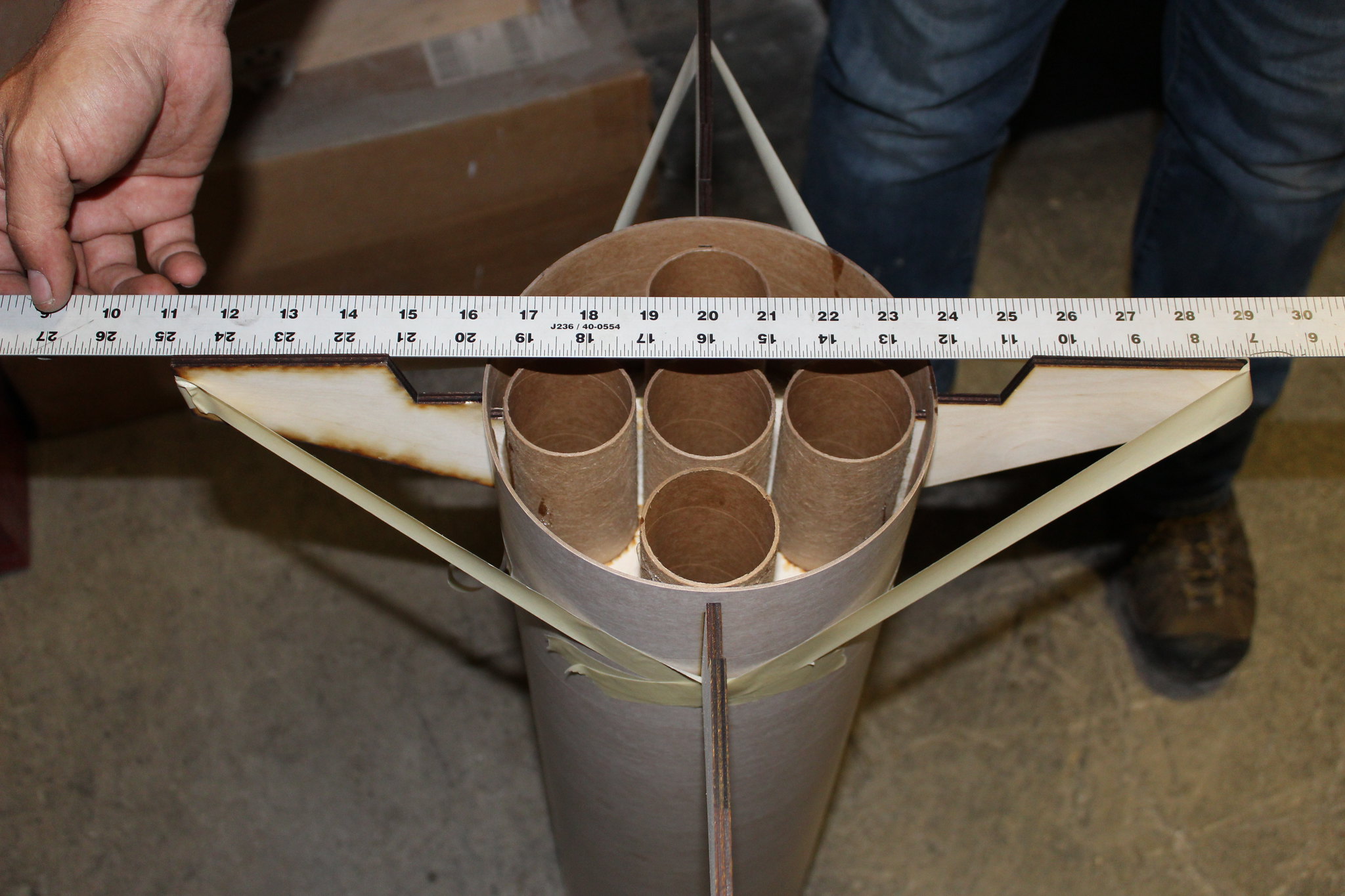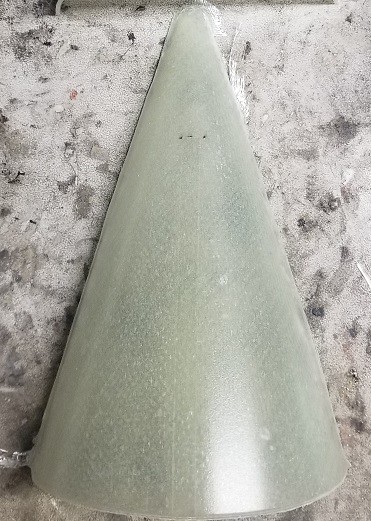ECayemberg
Well-Known Member
- Joined
- Jan 21, 2009
- Messages
- 2,874
- Reaction score
- 839
The following is a photo pictorial with brief descriptions of the assembly of the Loc Custom 7.67" Saturn V intended to guide the builder through the assembly process. It is expected that the builder of this kit has prior knowledge and experience with high power rocketry construction.
So welcome aboard, happy 50th Anniversary of the Apollo 11 flight, and enjoy the flight!
The model shown in the photos is the prototype...a quick built proof of concept project. The actual production model parts will vary slightly from shown (IE: you won't get the ugly duckling transition shown in the next few photos Let's start the build with the top half!
Let's start the build with the top half!
Upper 7.67” Airframe Assembly
Summary of this Section: the booster section consists of a 30" length of 7.675" OD airframe. This section, essentially a complex nose cone, sits atop the booster section.
Begin by installing a U-Bolt, and then epoxying a bulk plate into one end of the 7.5” coupler. Epoxy the Stiffy coupler inside the coupler as well. Fillet both sides of the bulk plate.
*Note*: if the builder chooses to build their Saturn V with electronics based dual deployment, they may choose to build this coupler as an Electronics bay.
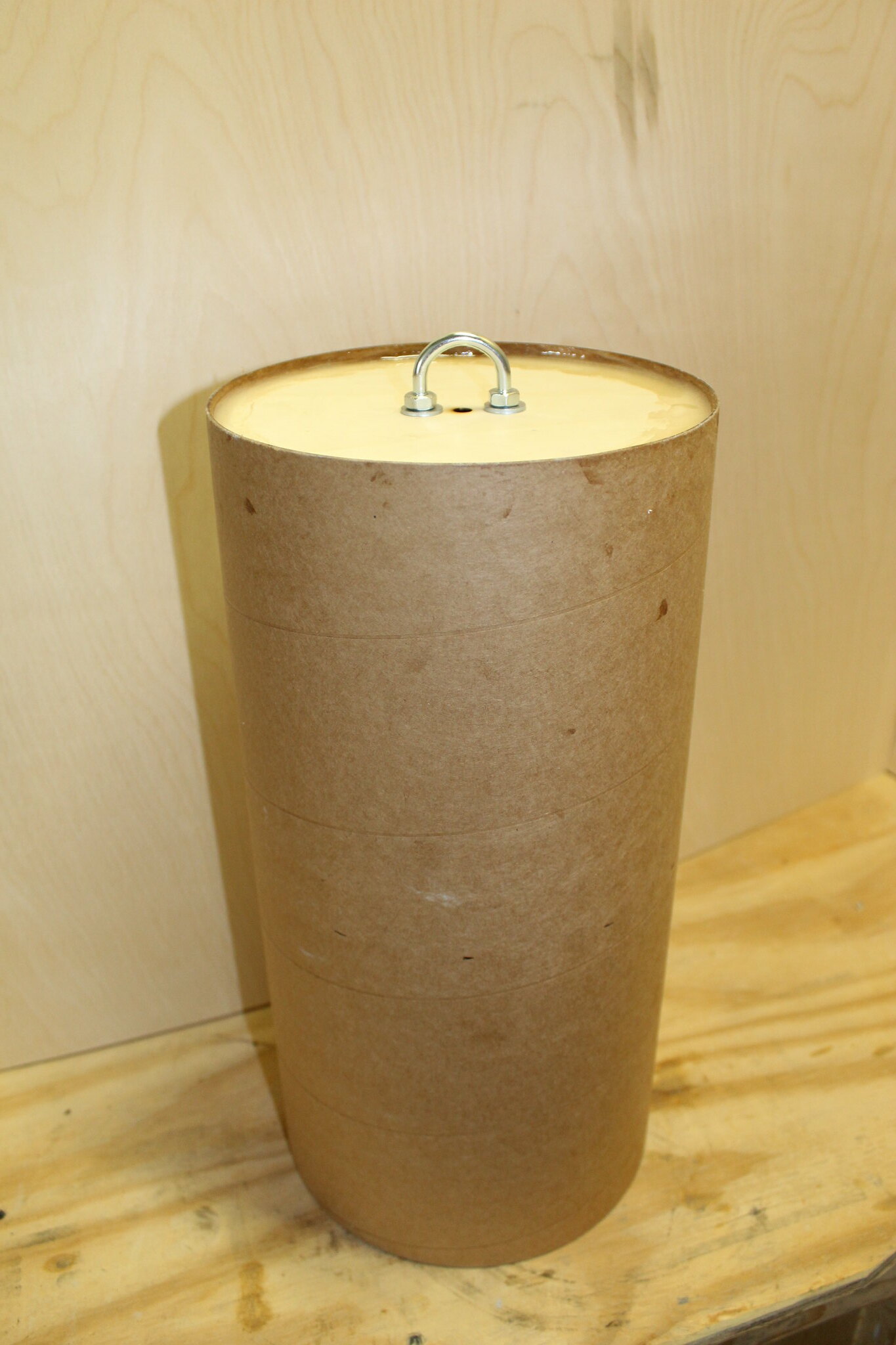
Make marks around the perimeter of the 5.54” tube 9.92” from one end of the tube (10” is fine, just be consistent!). This is where the top of the lower transition will sit.
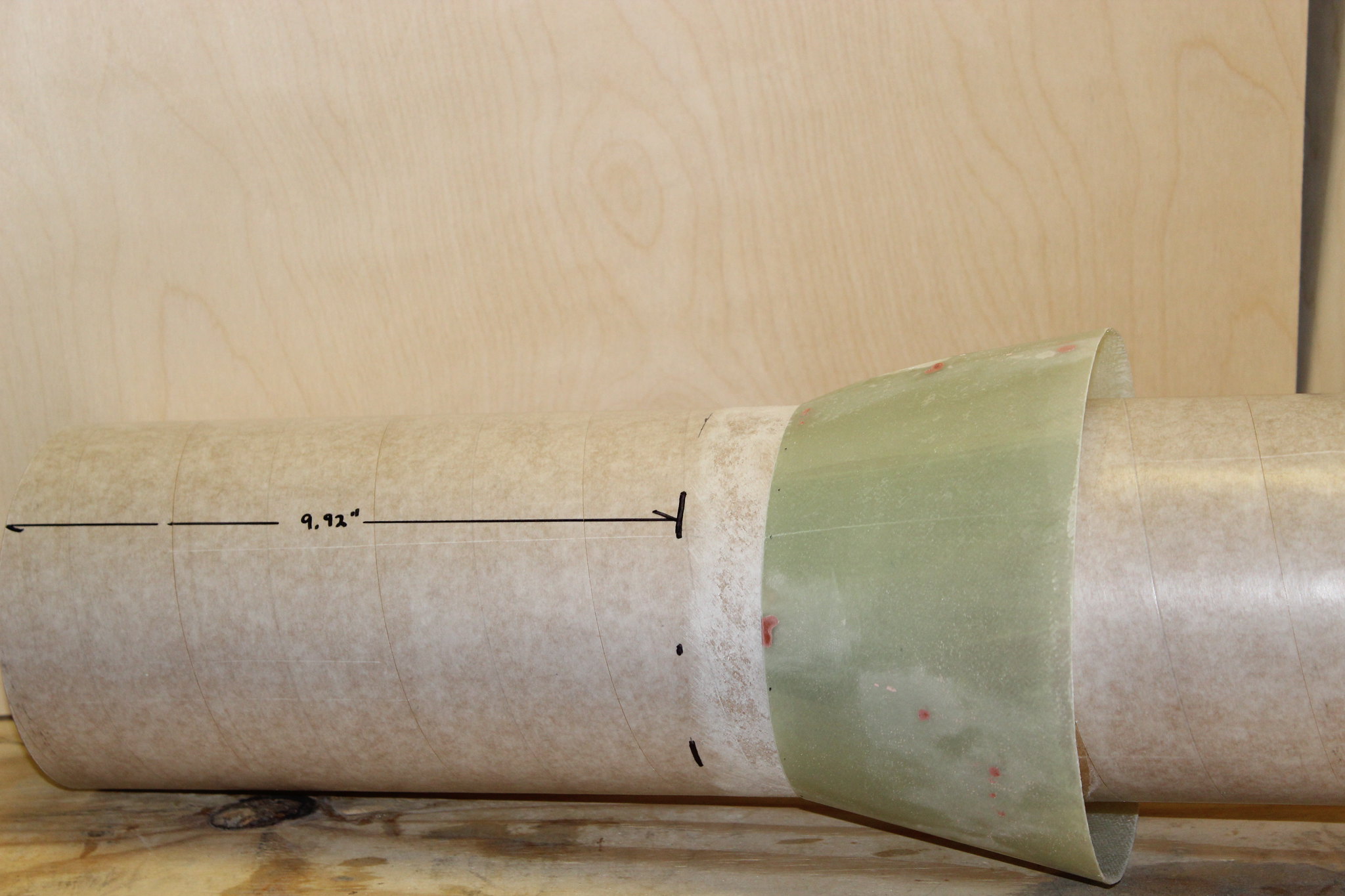
Slide the lower transition onto the 5.54” tube. Two 5.54” to 7.5” centering rings will be glued to the 5.54” tube below the transition as shown. Square up the lower transition using the top centering ring, 7.67” airframe, etc. Mark the airframe and scuff the tube as necessary.
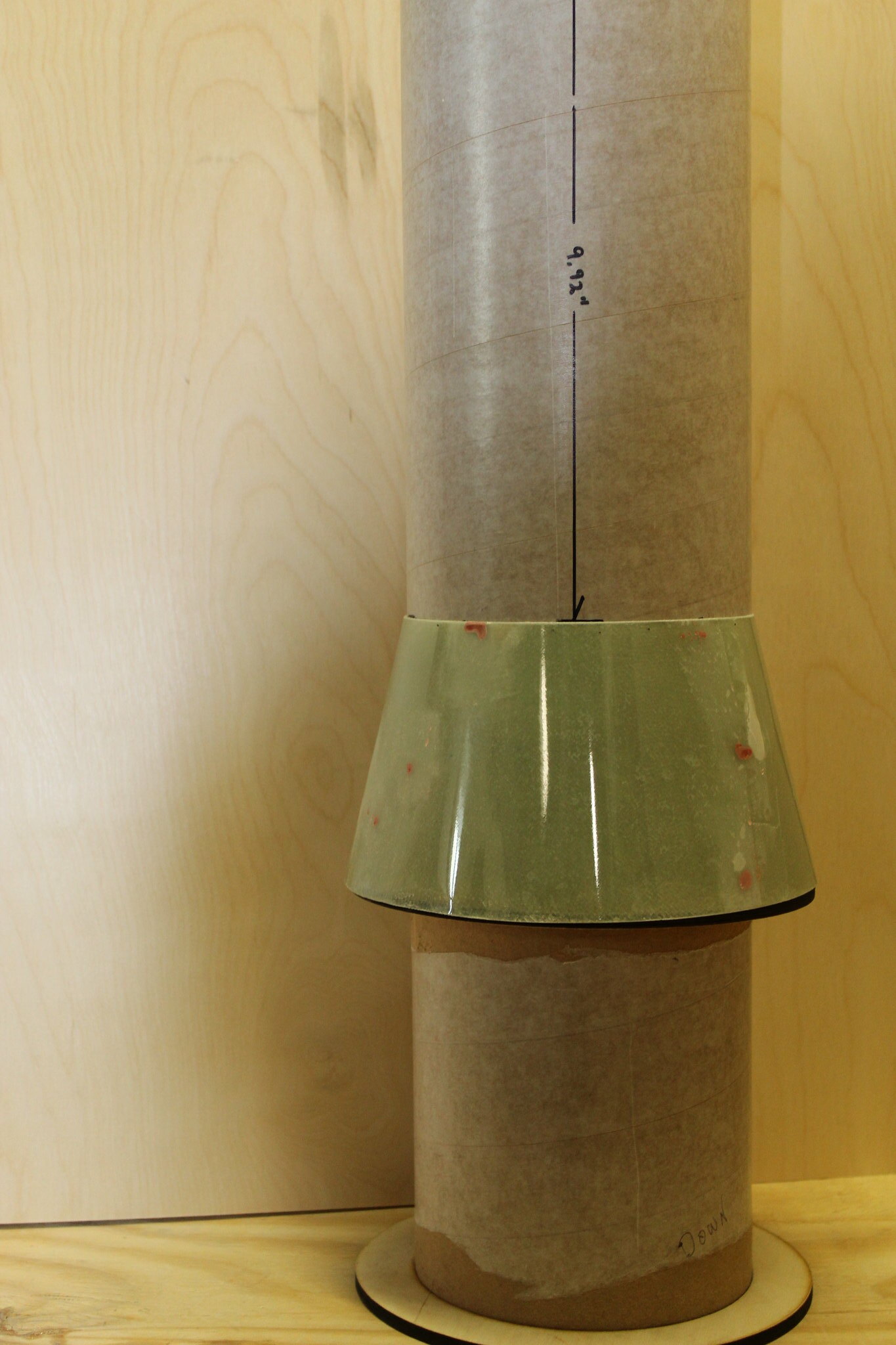
Prepare to epoxy top ring and transition in place
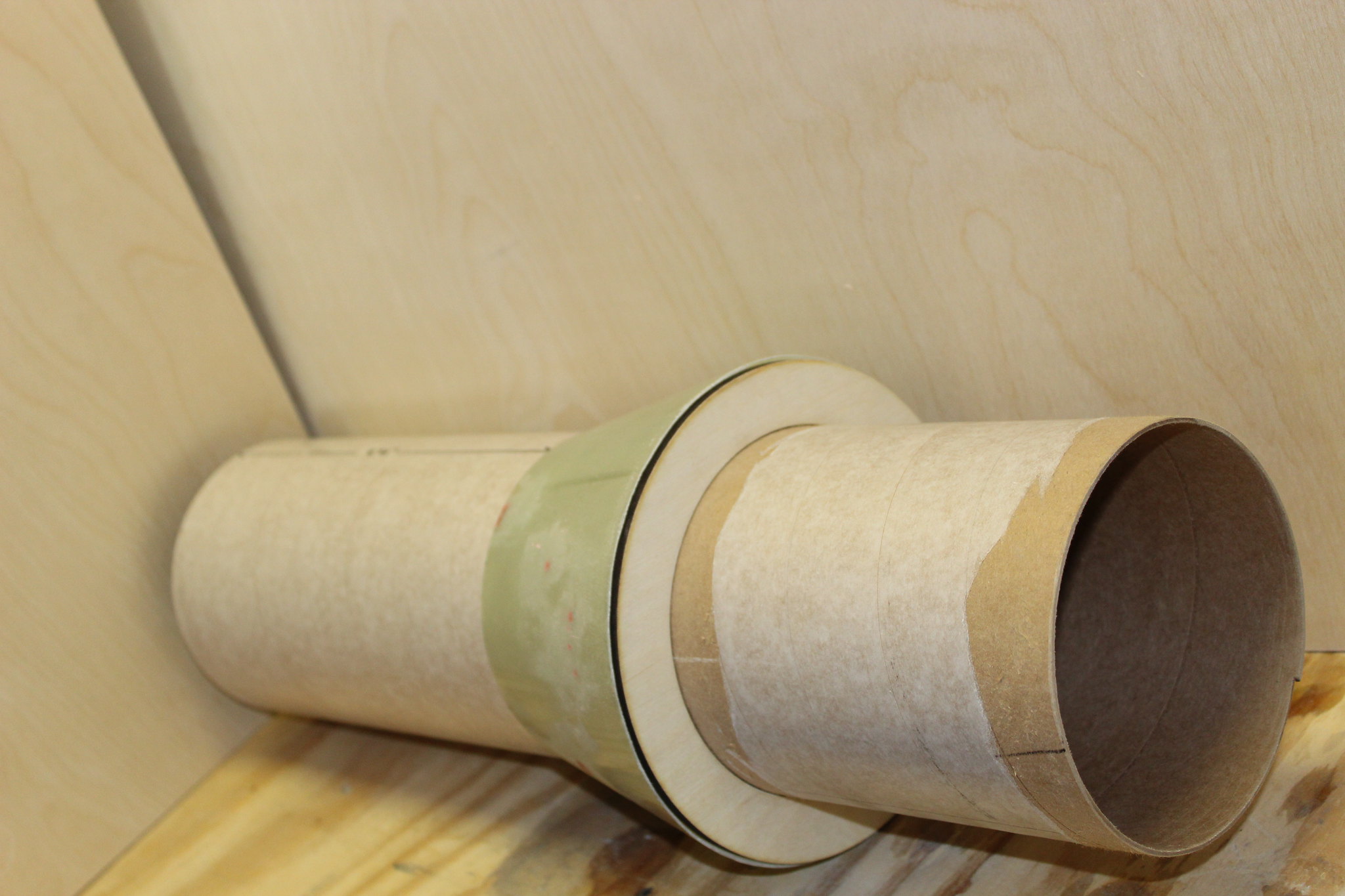
Epoxy it all together! The builder may choose to use a slower setting epoxy in order to allow time to ensure proper alignment of the transition. No pressure, but don't screw it up! Apply epoxy to the following areas:
Apply epoxy to the following areas:
-base of the transition where it meets the top edge of the centering ring
-top of the transition where it meets the 5.54” airframe
-Fore and aft edges of the top centering ring where it meets the 5.54” airframe
-Fore and aft edges of the bottom centering ring where it meets the 5.54” airframe
Clean up any excess epoxy, ensure proper alignment (use 7.67” tube if necessary), set aside to dry.
Epoxy lower centering ring 1/4" up from the end of the 5.54" tube. Fillet the ring-to-5.54" tube joints, set aside to dry, and admire your good work.
So welcome aboard, happy 50th Anniversary of the Apollo 11 flight, and enjoy the flight!
The model shown in the photos is the prototype...a quick built proof of concept project. The actual production model parts will vary slightly from shown (IE: you won't get the ugly duckling transition shown in the next few photos
Upper 7.67” Airframe Assembly
Summary of this Section: the booster section consists of a 30" length of 7.675" OD airframe. This section, essentially a complex nose cone, sits atop the booster section.
Begin by installing a U-Bolt, and then epoxying a bulk plate into one end of the 7.5” coupler. Epoxy the Stiffy coupler inside the coupler as well. Fillet both sides of the bulk plate.
*Note*: if the builder chooses to build their Saturn V with electronics based dual deployment, they may choose to build this coupler as an Electronics bay.

Make marks around the perimeter of the 5.54” tube 9.92” from one end of the tube (10” is fine, just be consistent!). This is where the top of the lower transition will sit.

Slide the lower transition onto the 5.54” tube. Two 5.54” to 7.5” centering rings will be glued to the 5.54” tube below the transition as shown. Square up the lower transition using the top centering ring, 7.67” airframe, etc. Mark the airframe and scuff the tube as necessary.

Prepare to epoxy top ring and transition in place

Epoxy it all together! The builder may choose to use a slower setting epoxy in order to allow time to ensure proper alignment of the transition. No pressure, but don't screw it up!
-base of the transition where it meets the top edge of the centering ring
-top of the transition where it meets the 5.54” airframe
-Fore and aft edges of the top centering ring where it meets the 5.54” airframe
-Fore and aft edges of the bottom centering ring where it meets the 5.54” airframe
Clean up any excess epoxy, ensure proper alignment (use 7.67” tube if necessary), set aside to dry.
Epoxy lower centering ring 1/4" up from the end of the 5.54" tube. Fillet the ring-to-5.54" tube joints, set aside to dry, and admire your good work.
Last edited:





